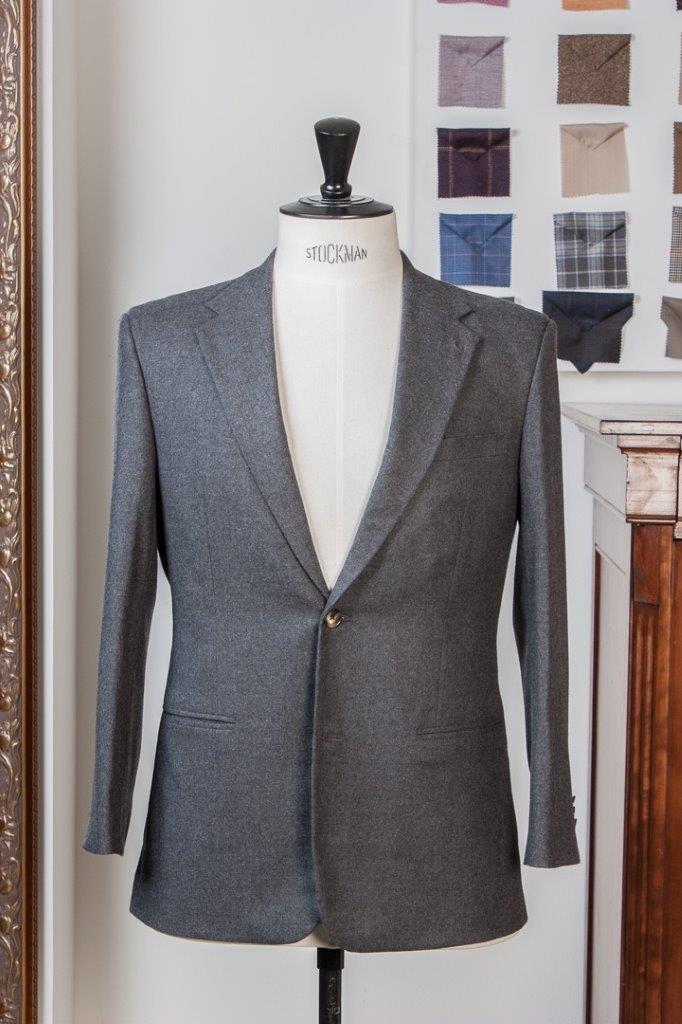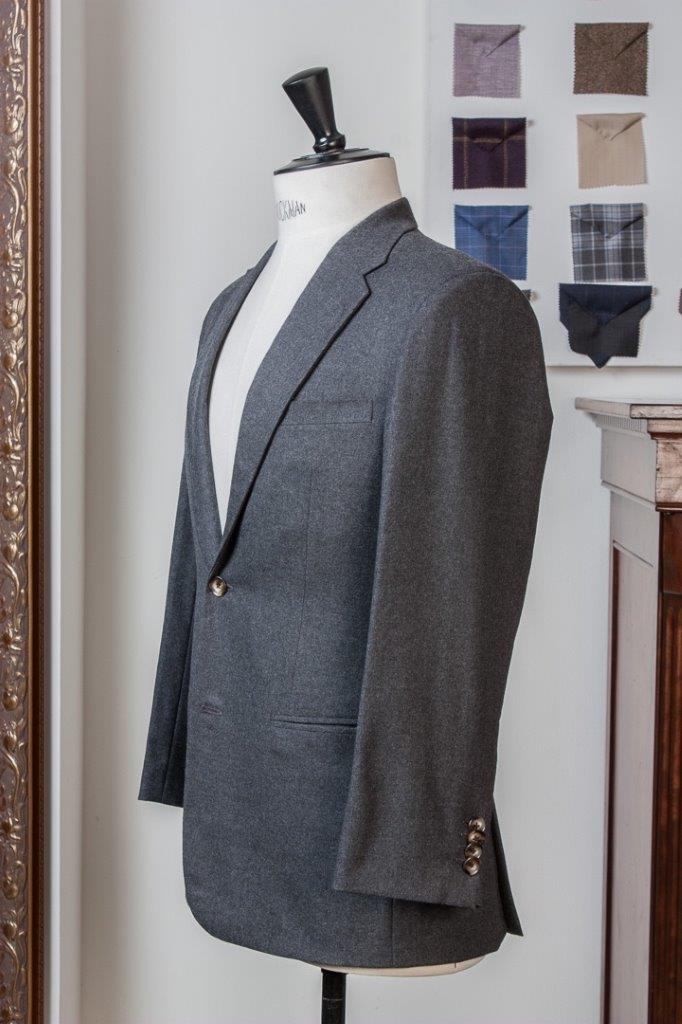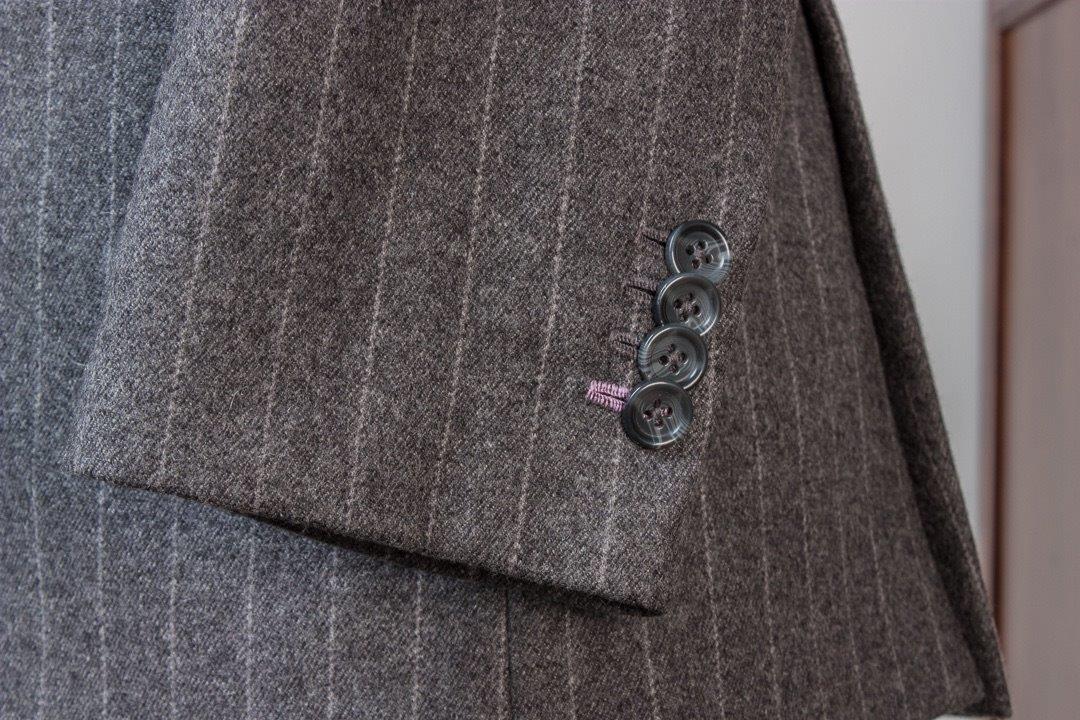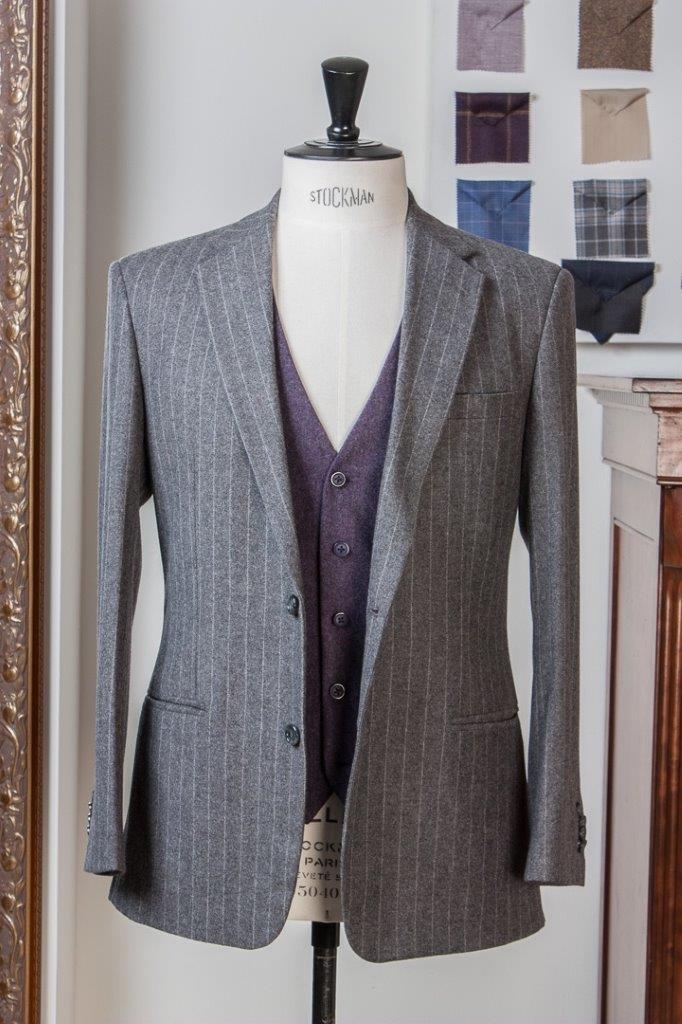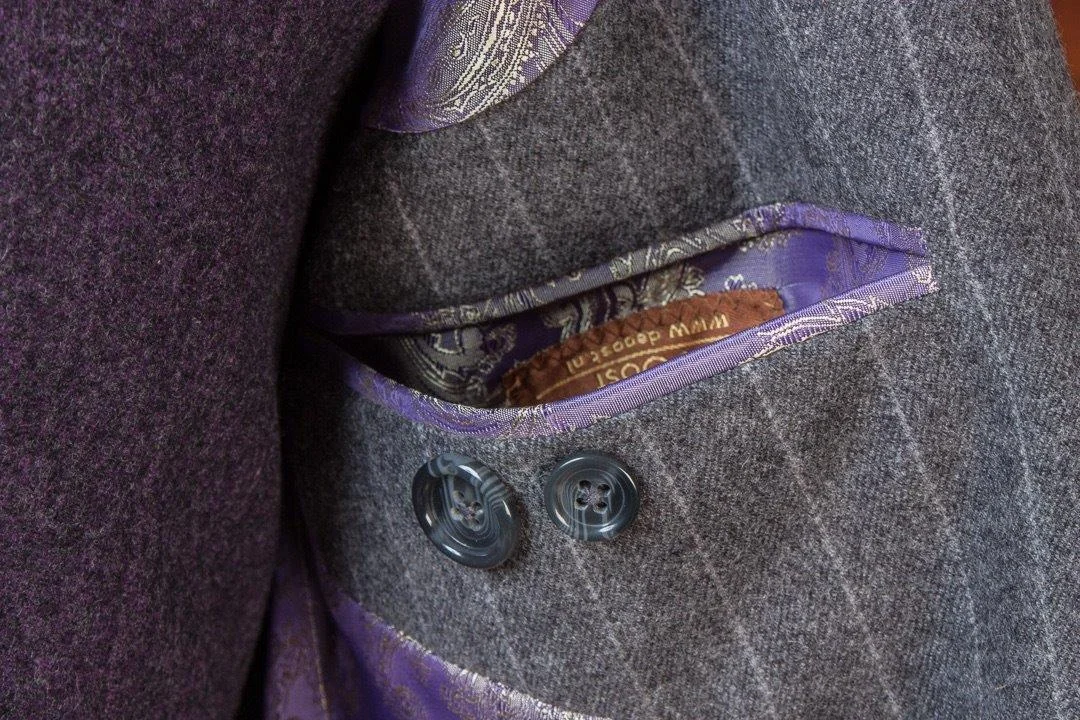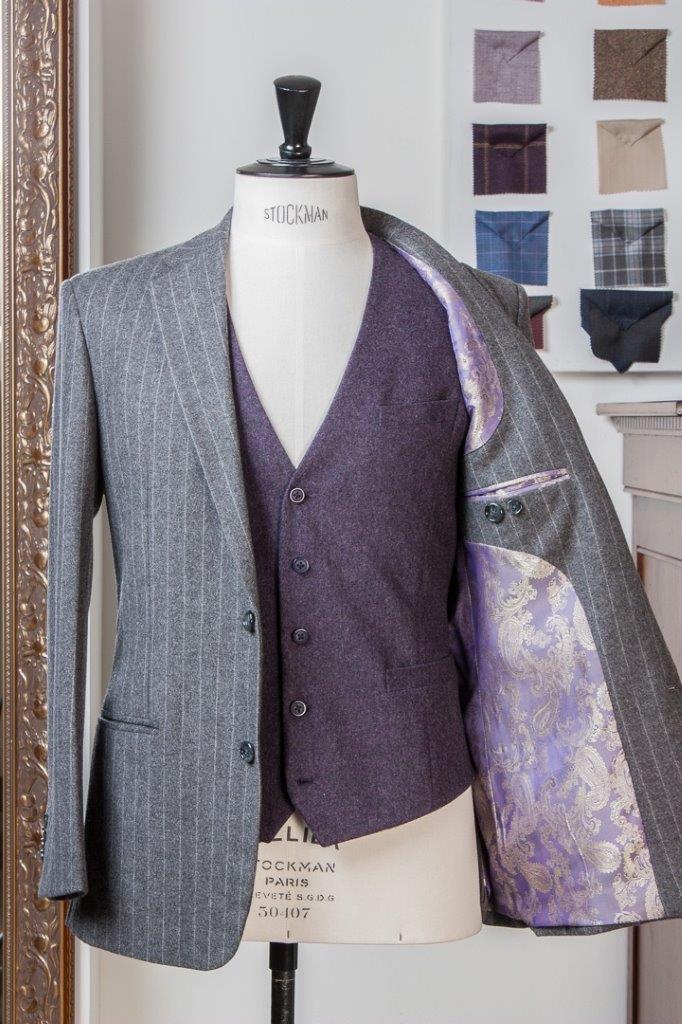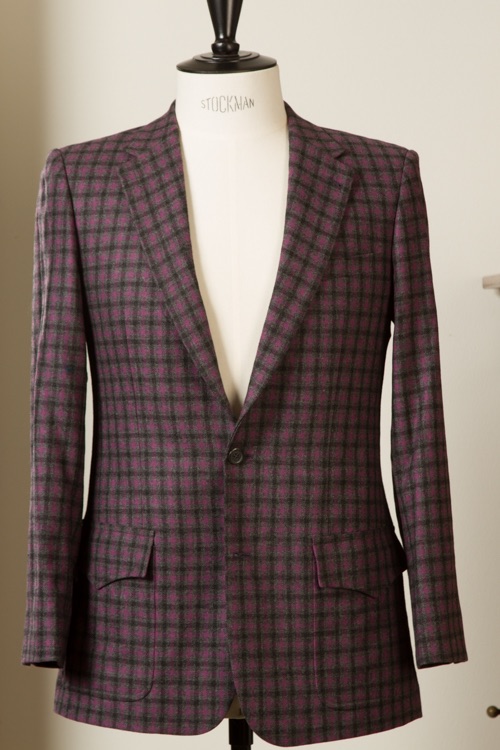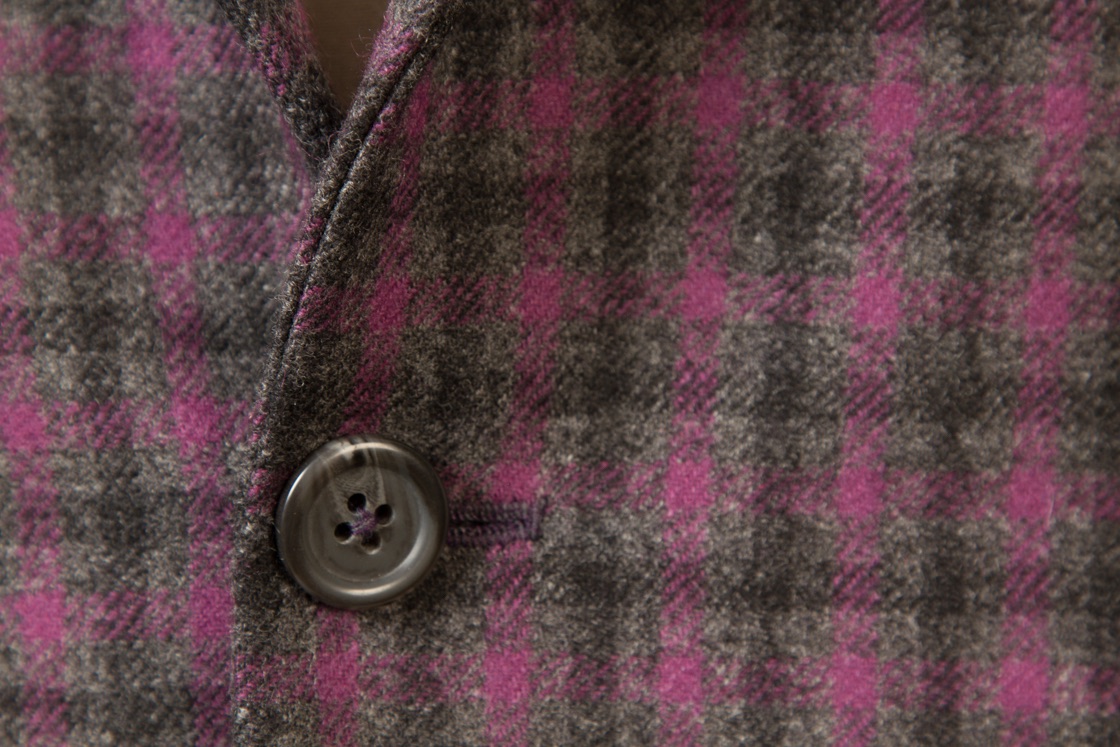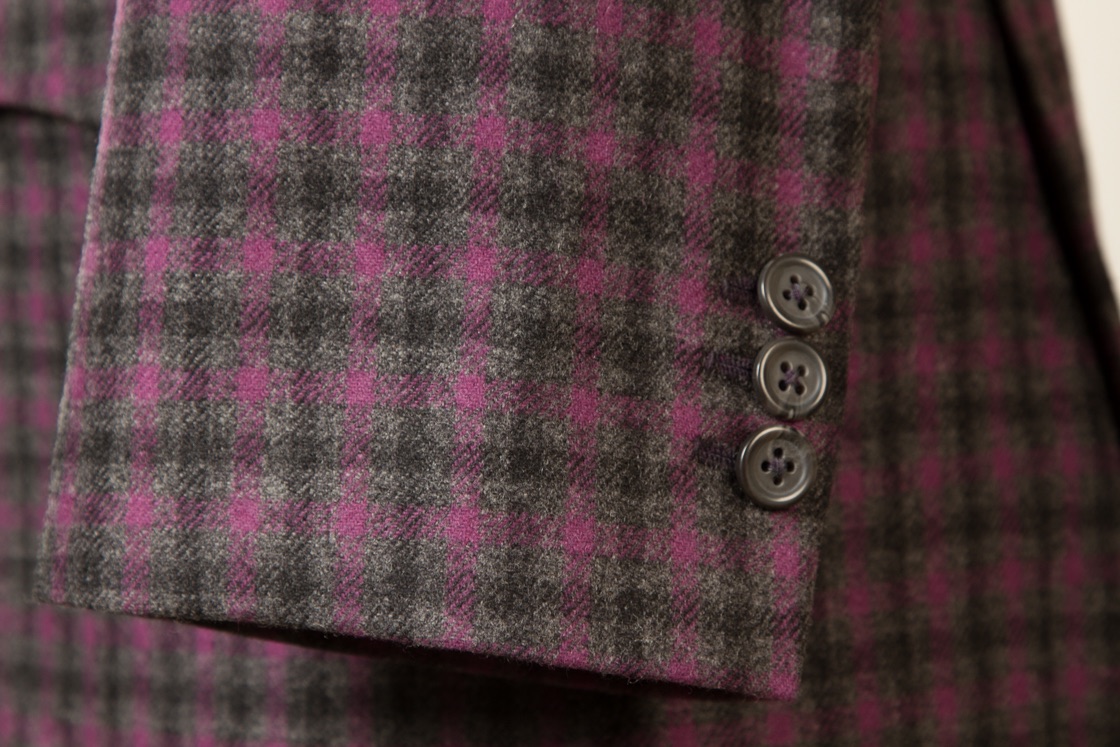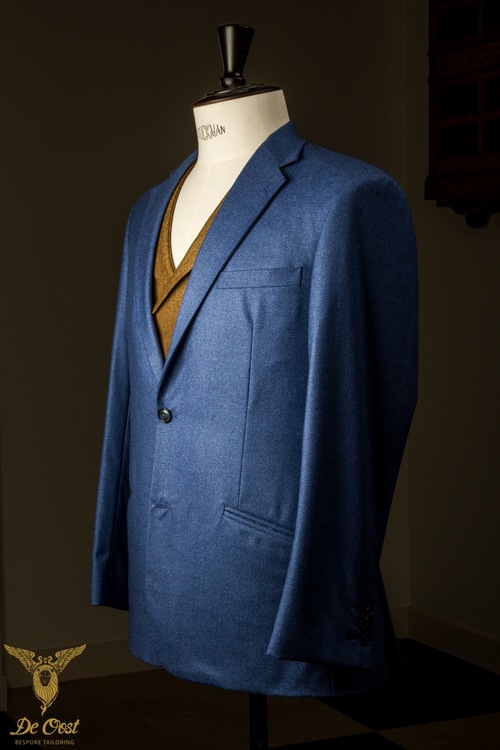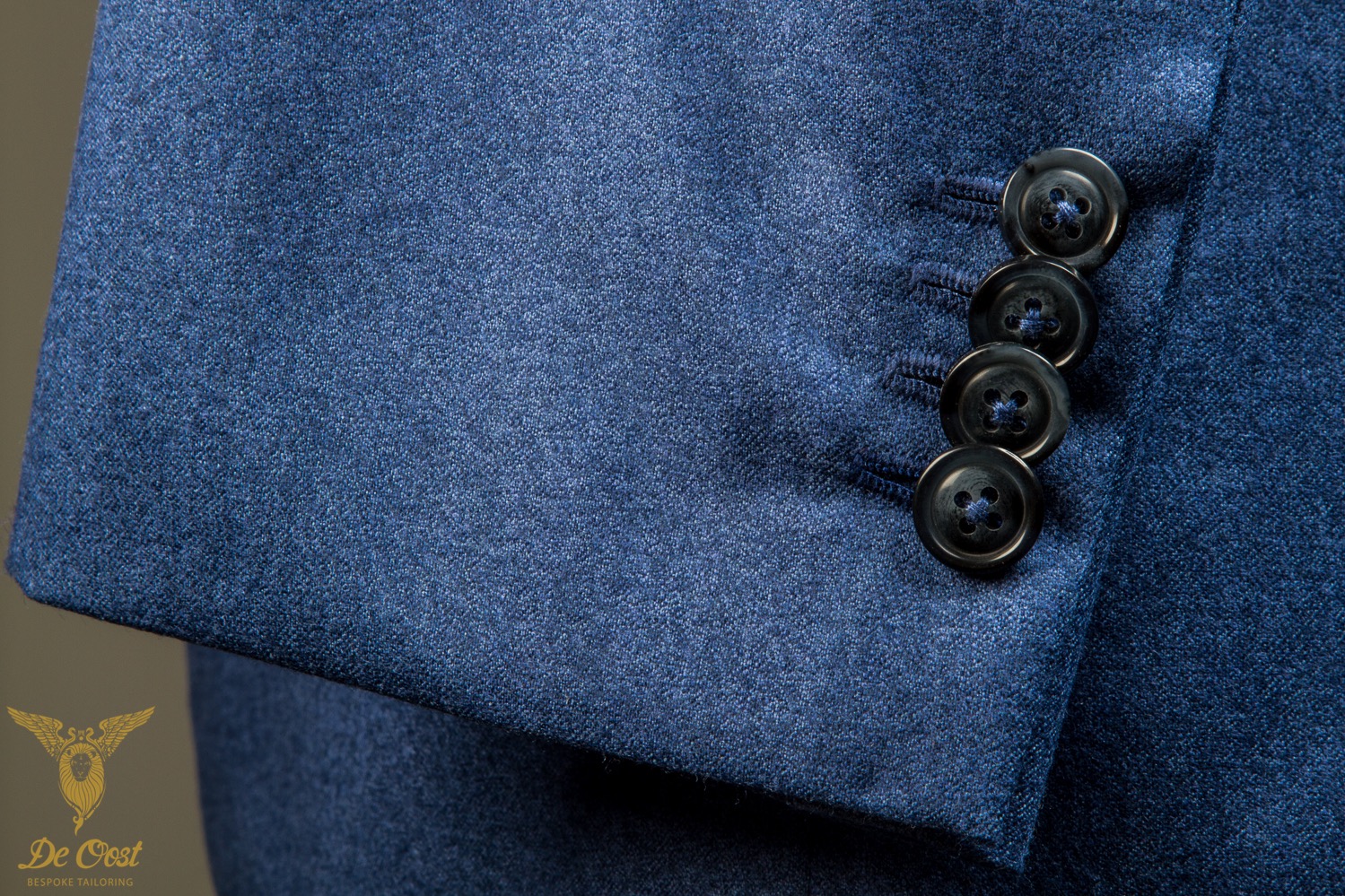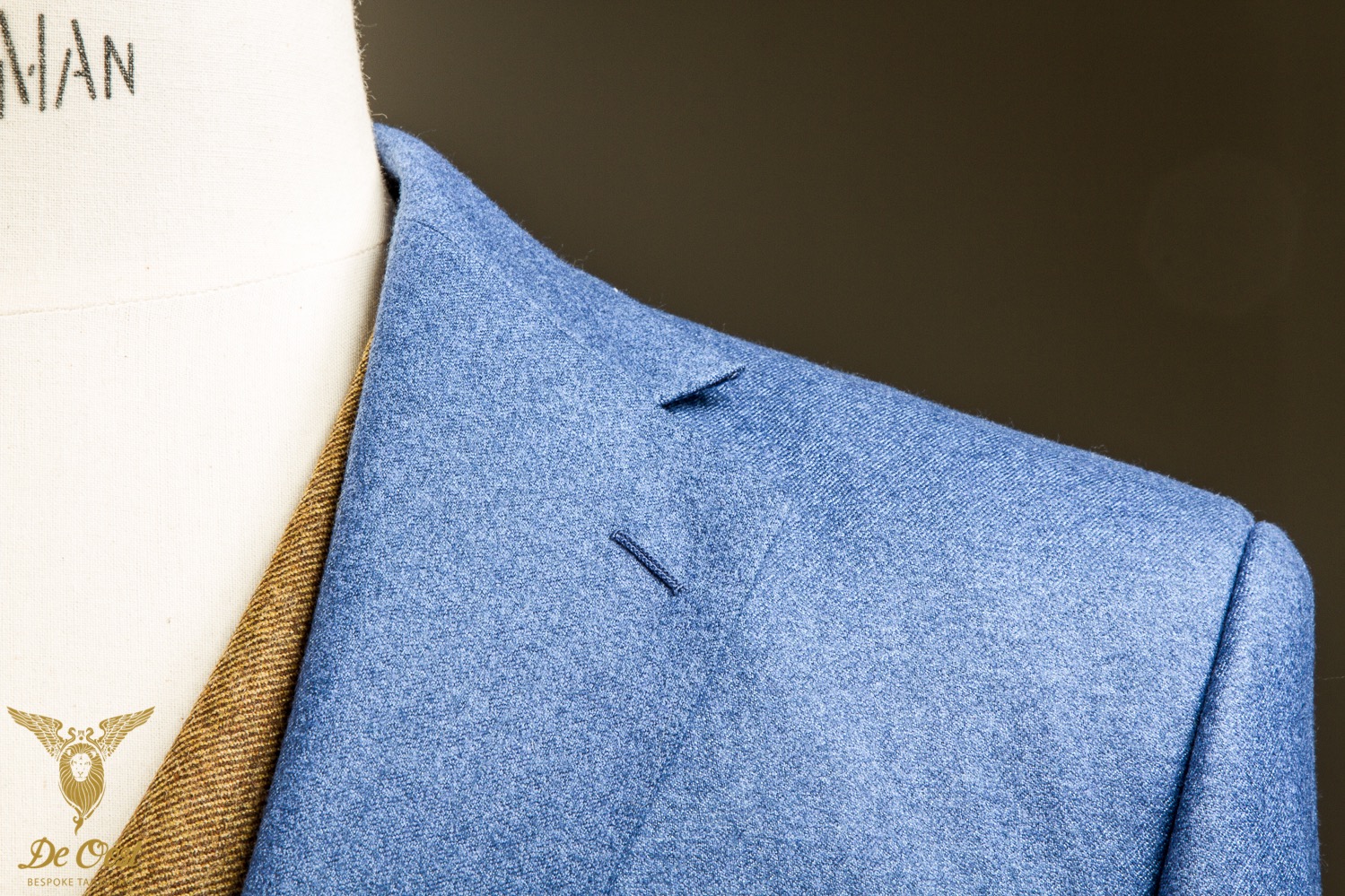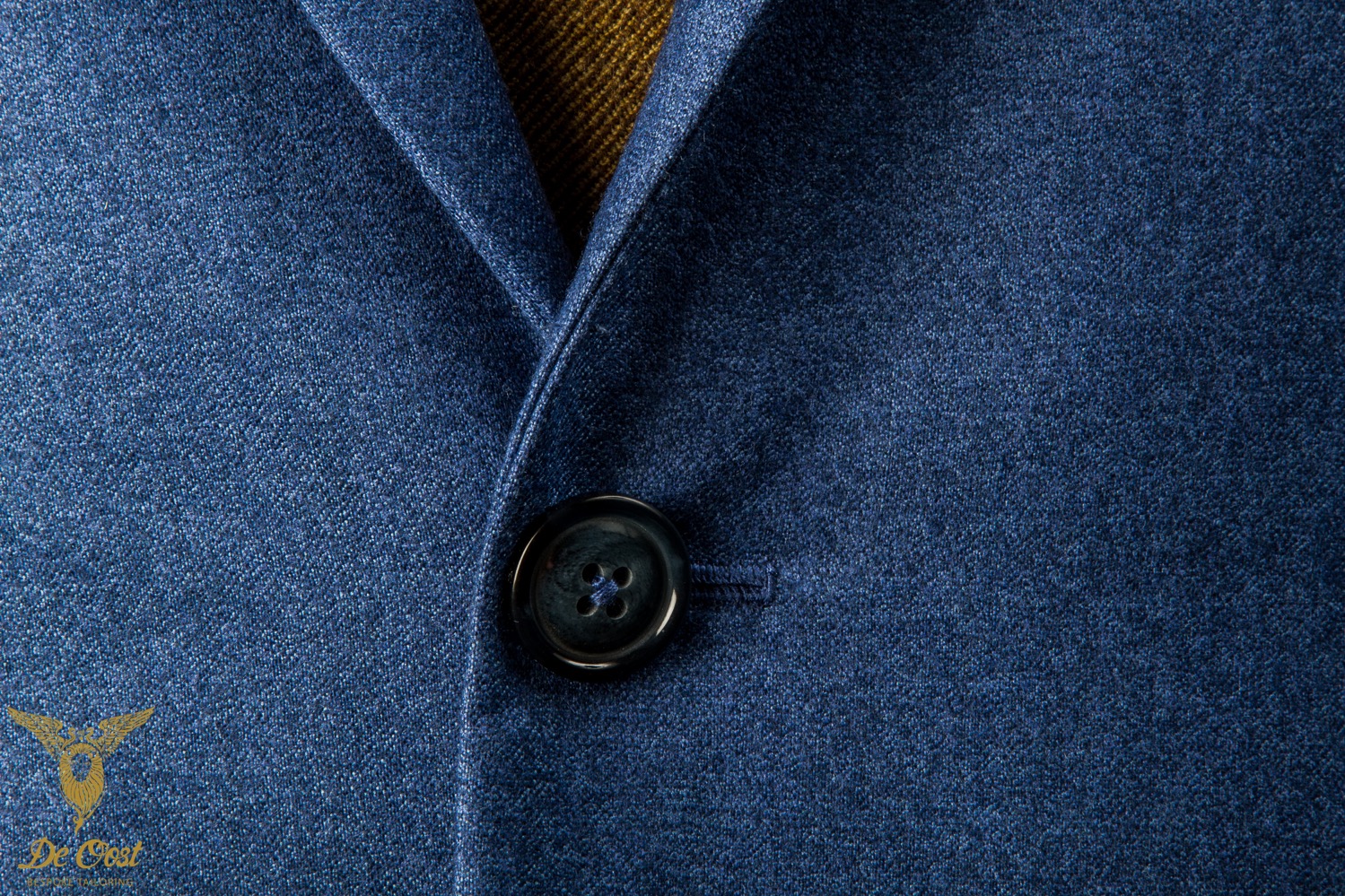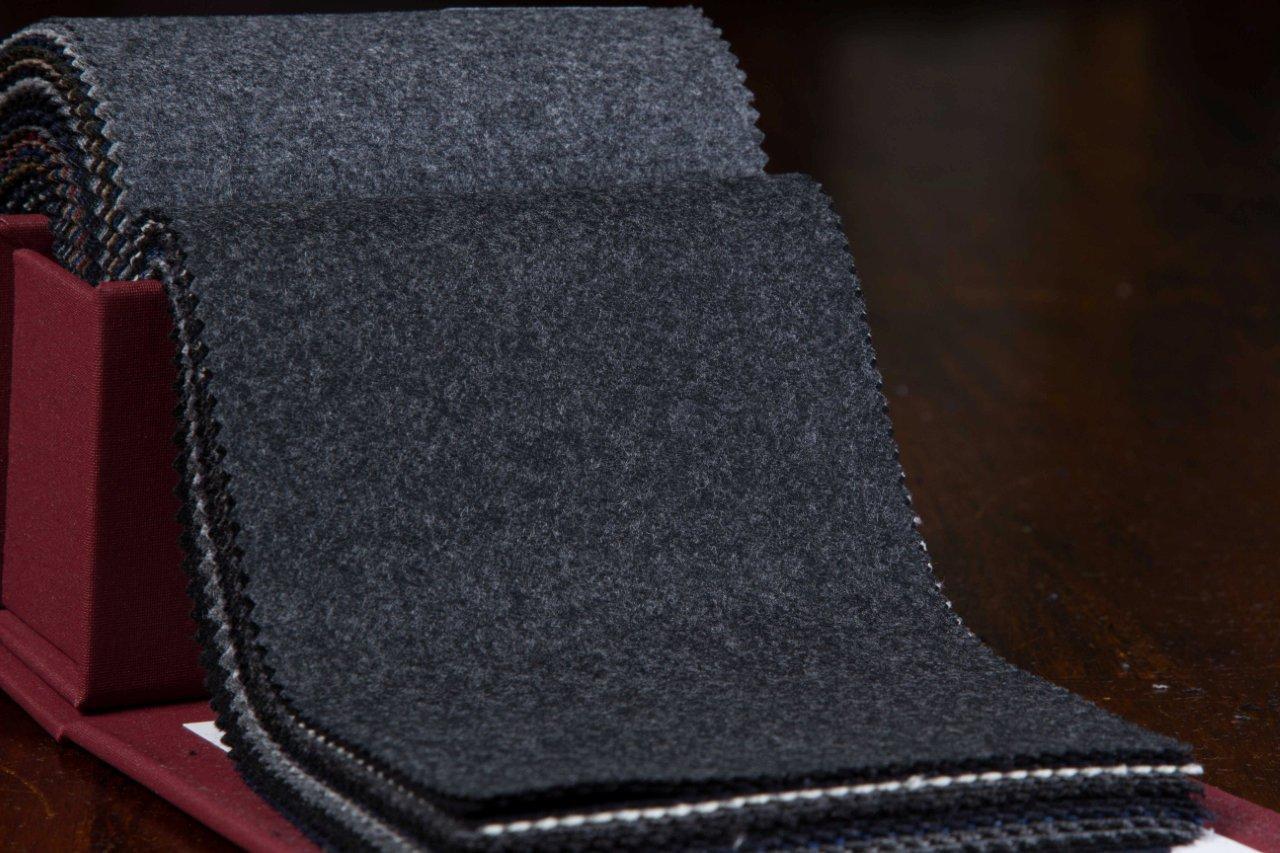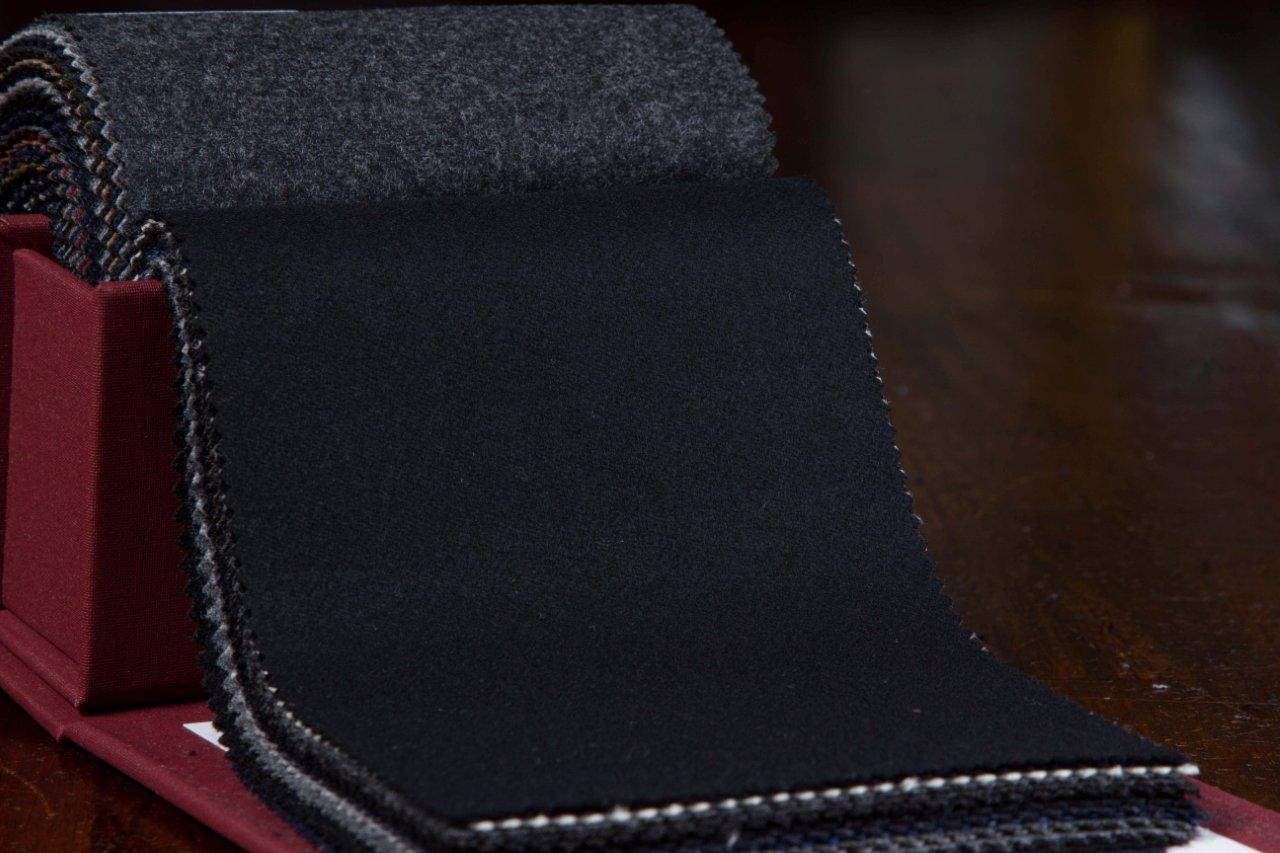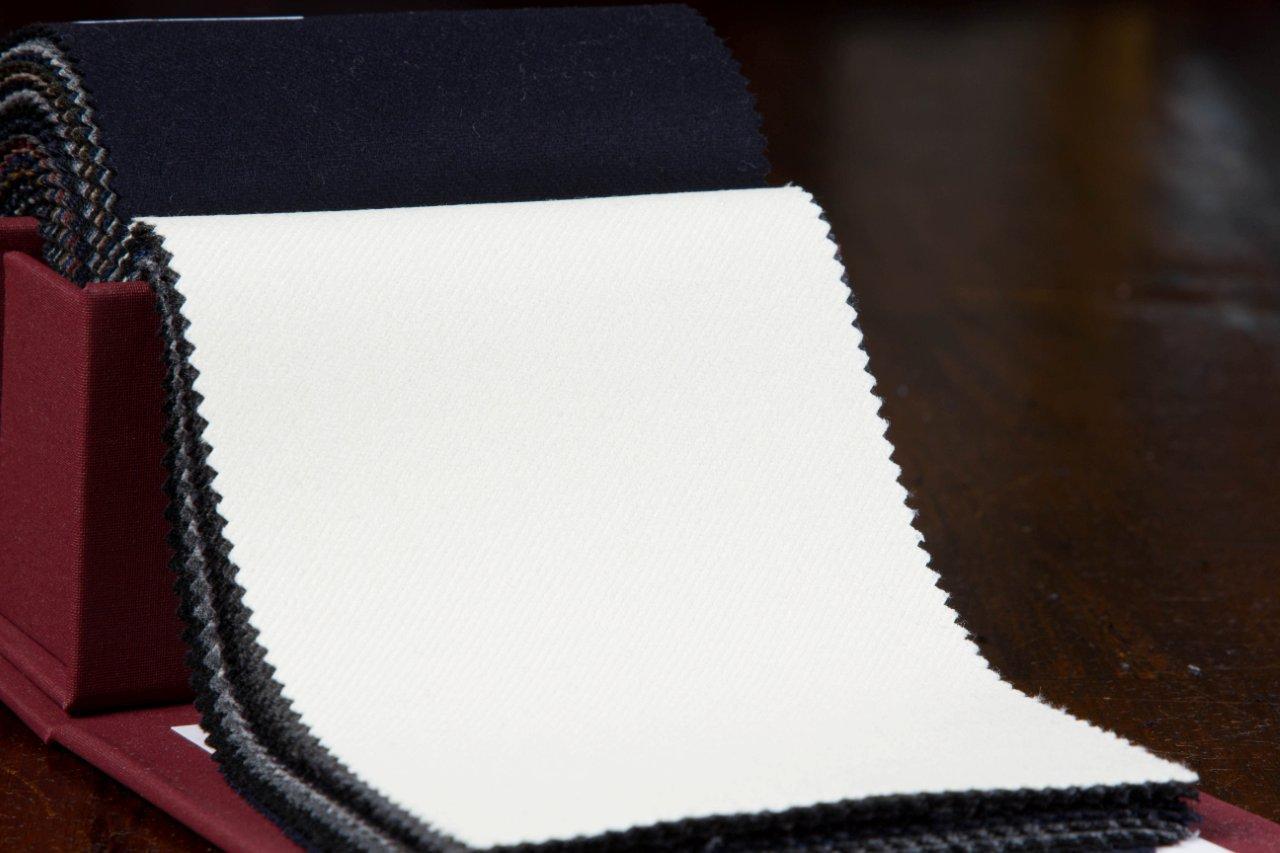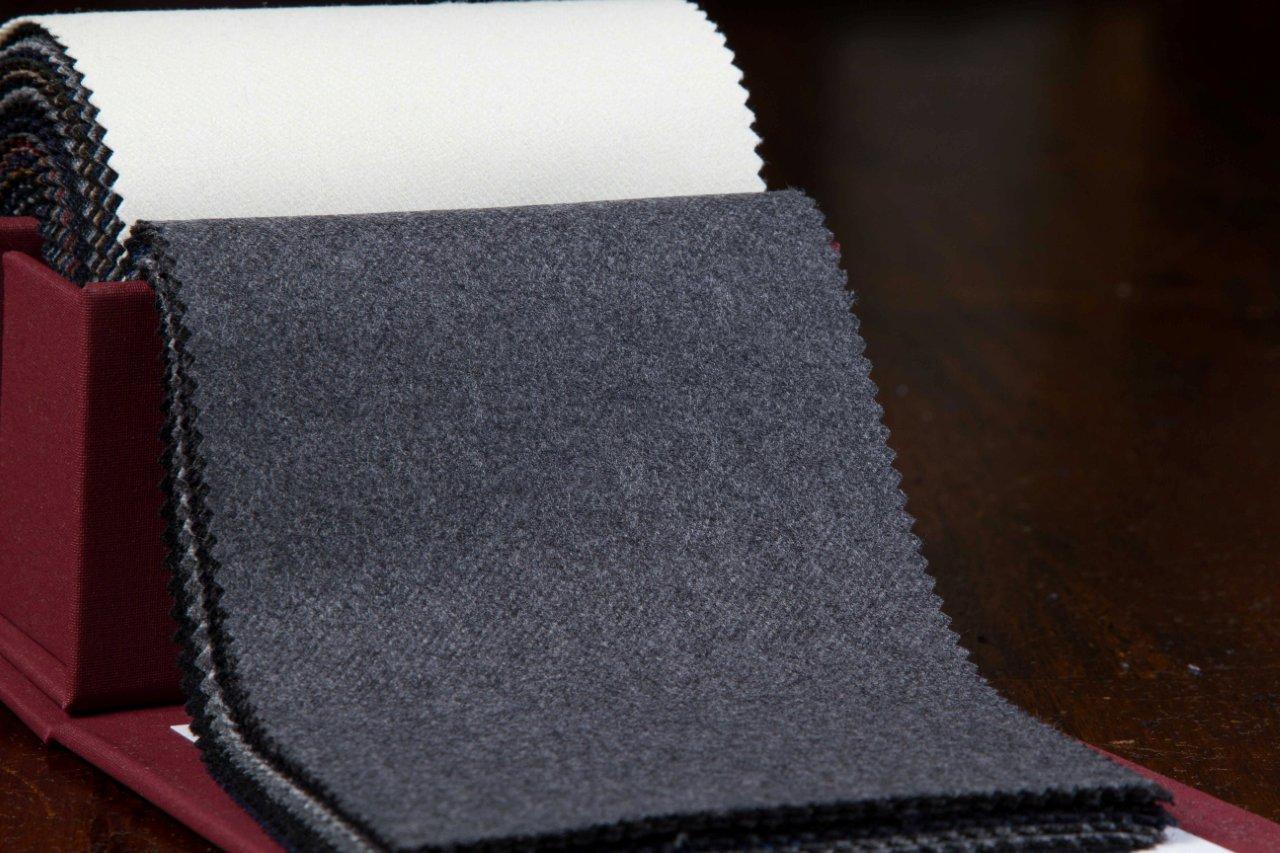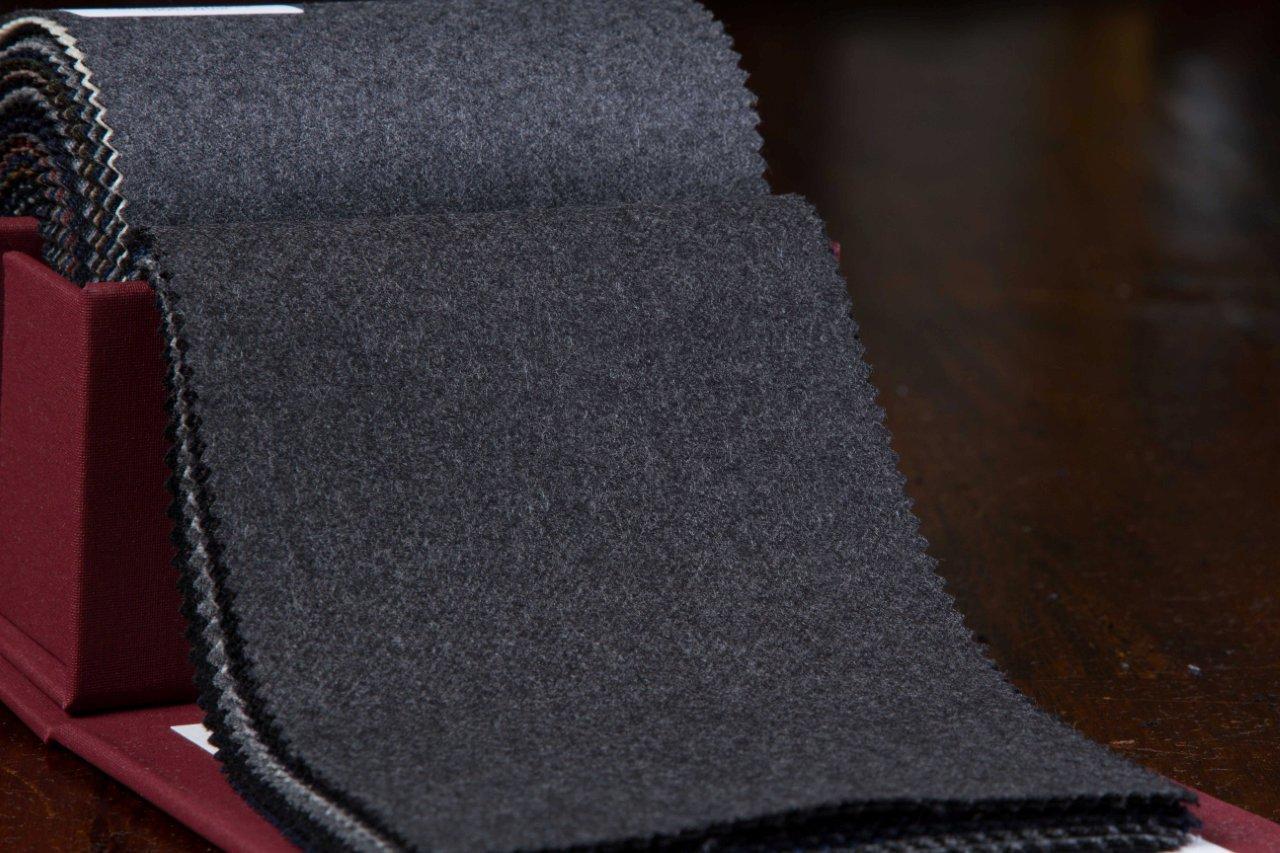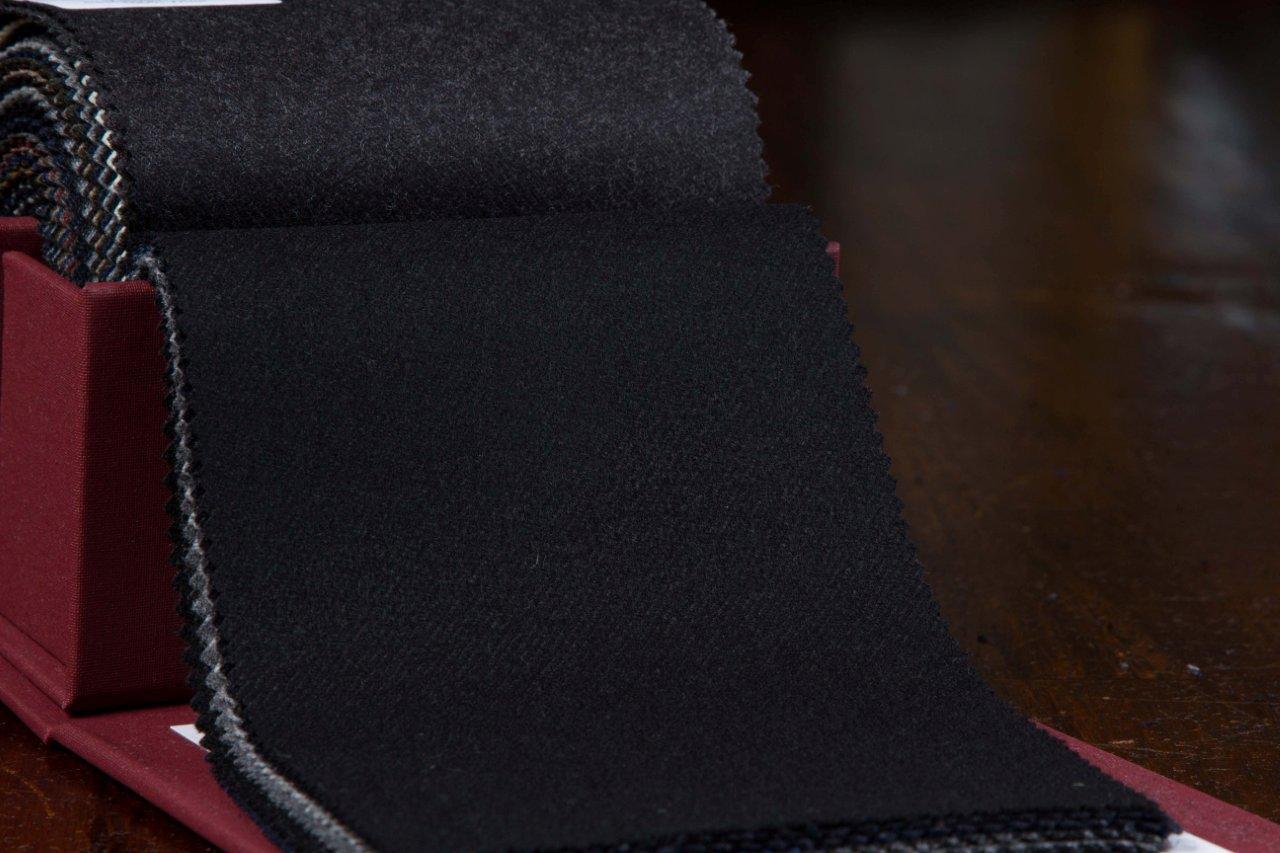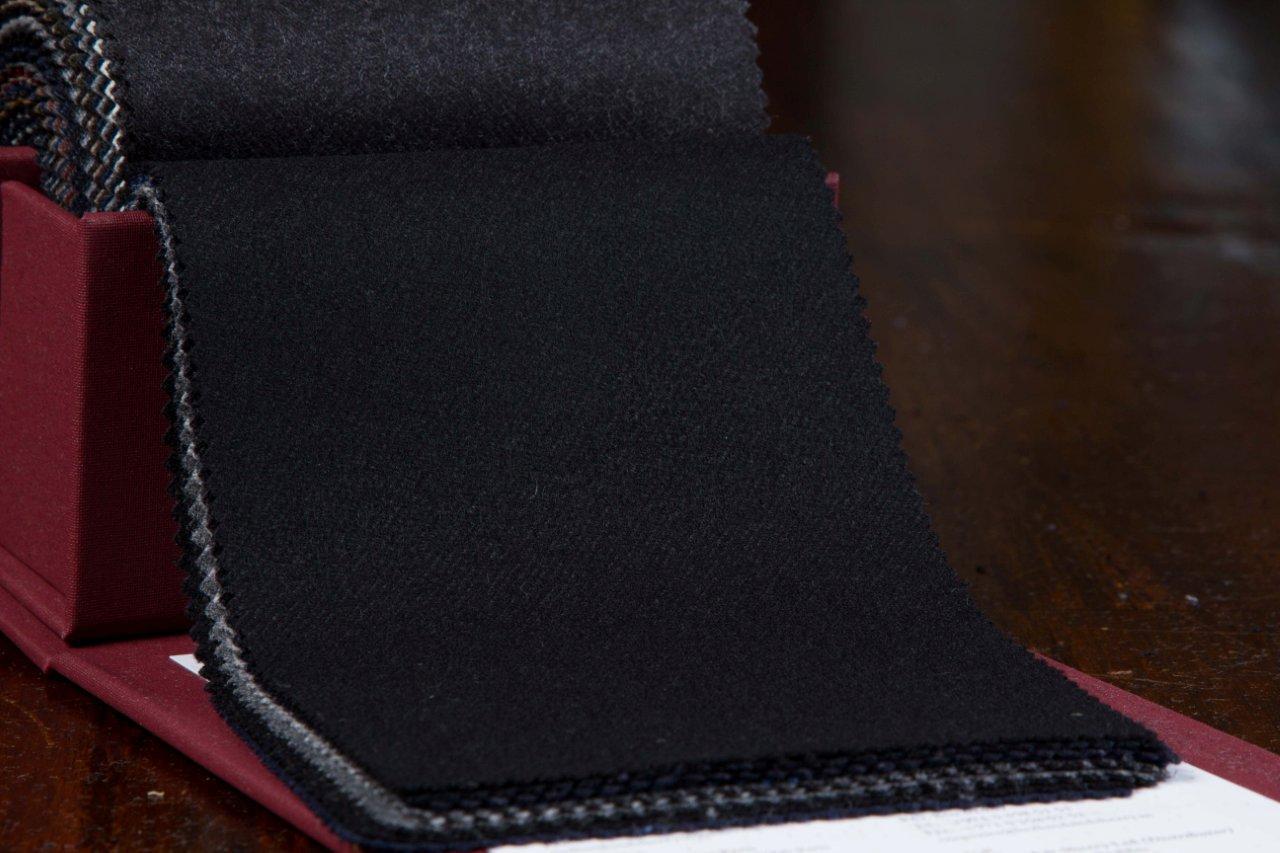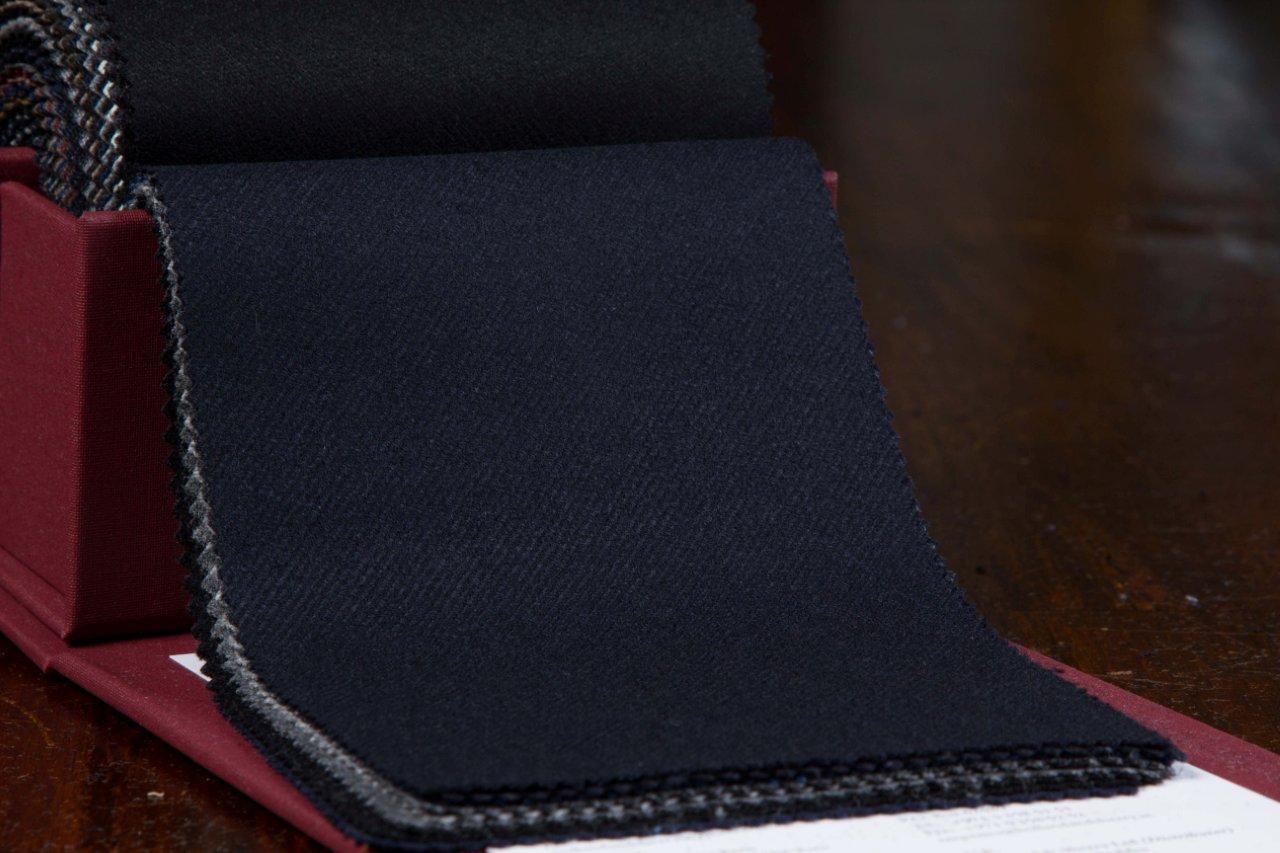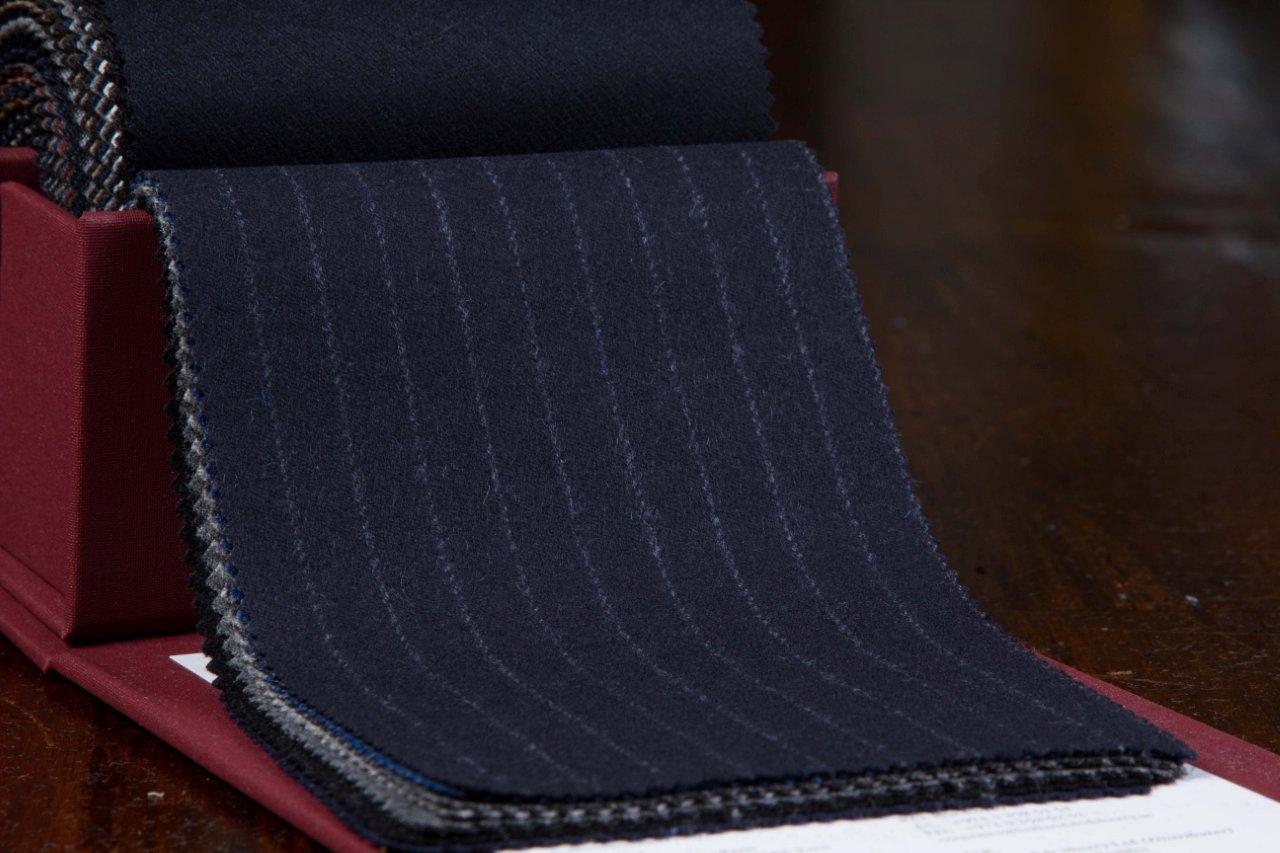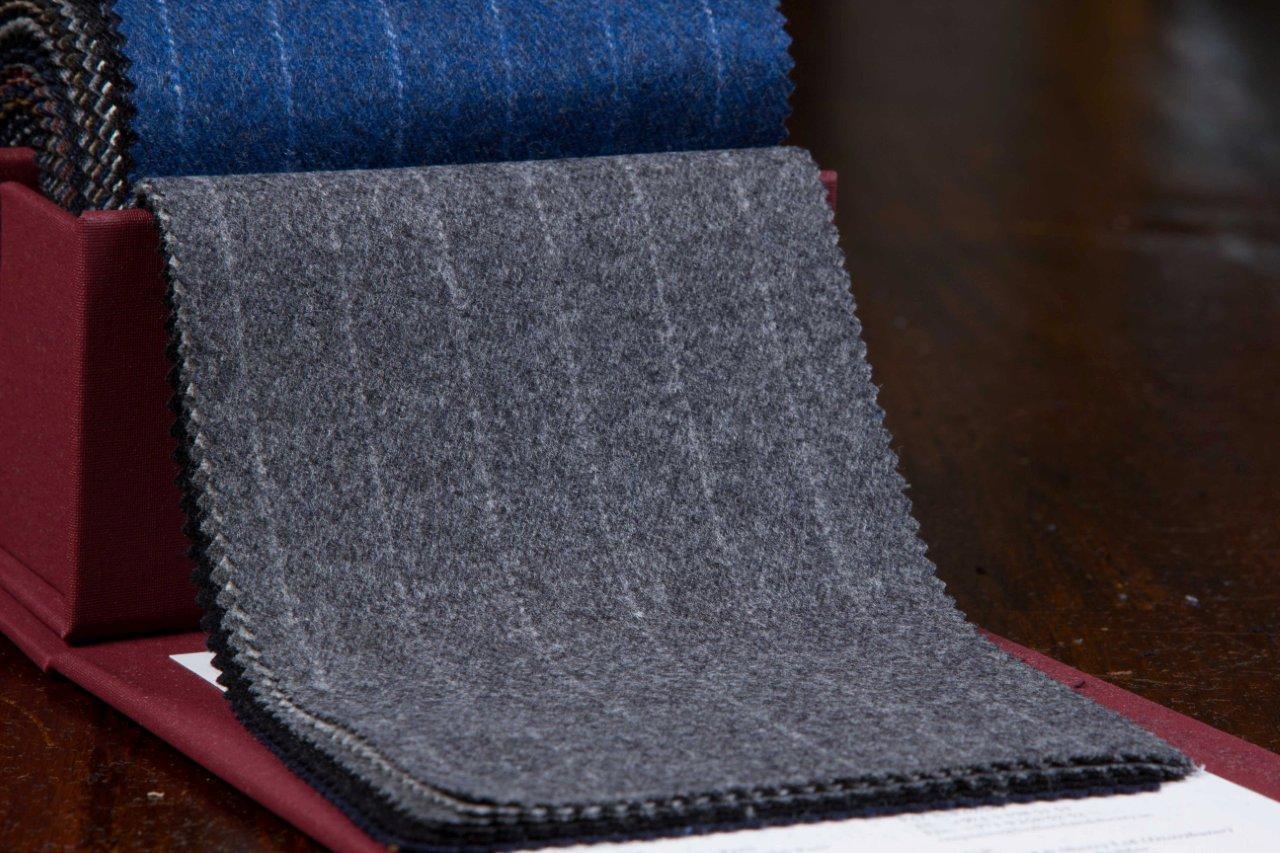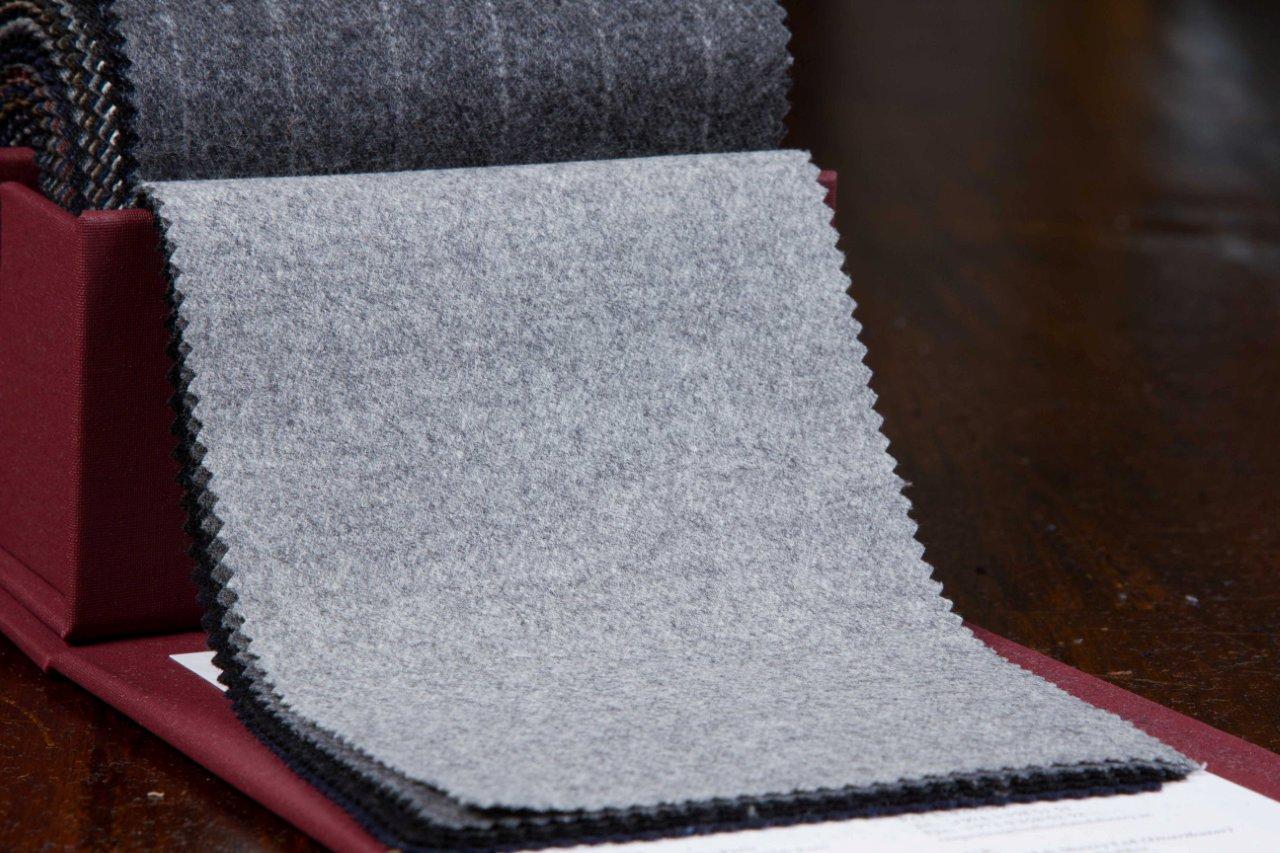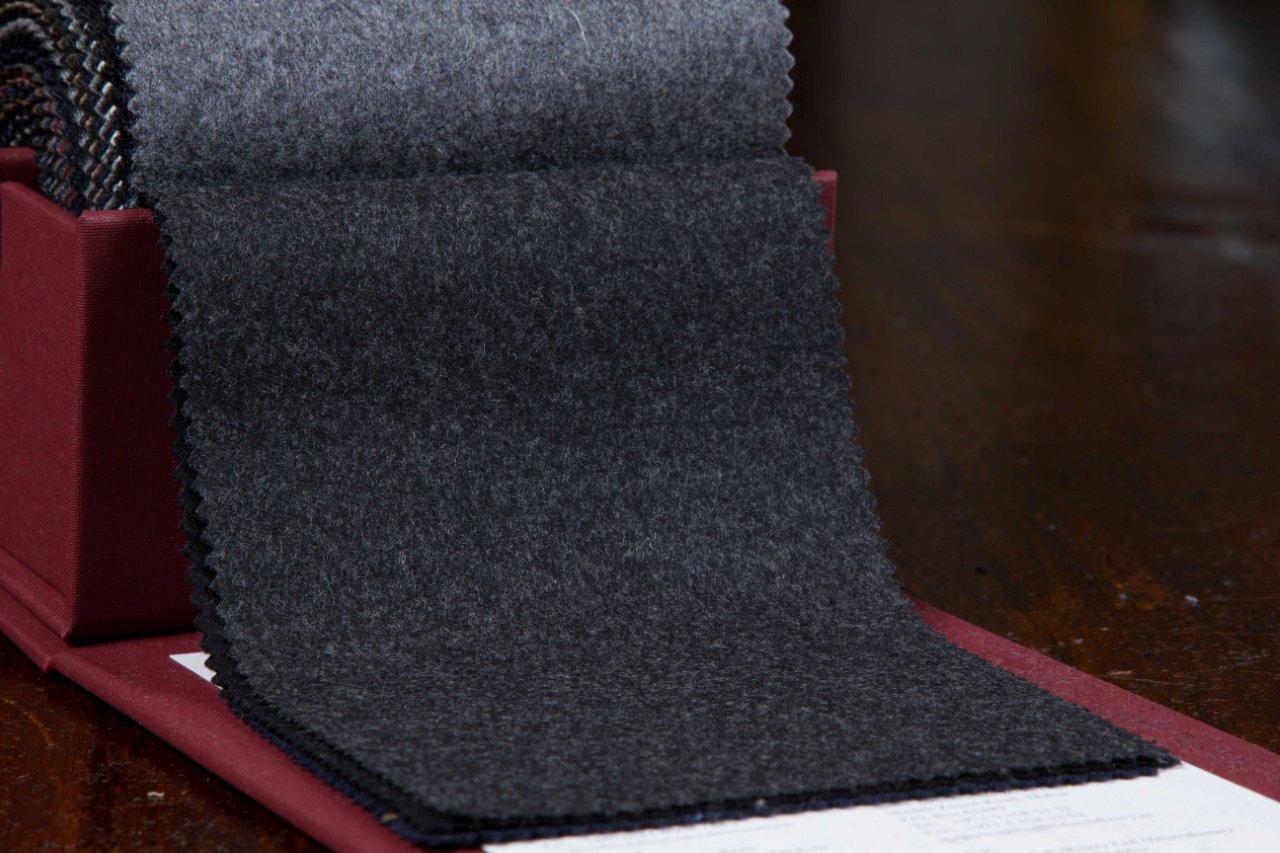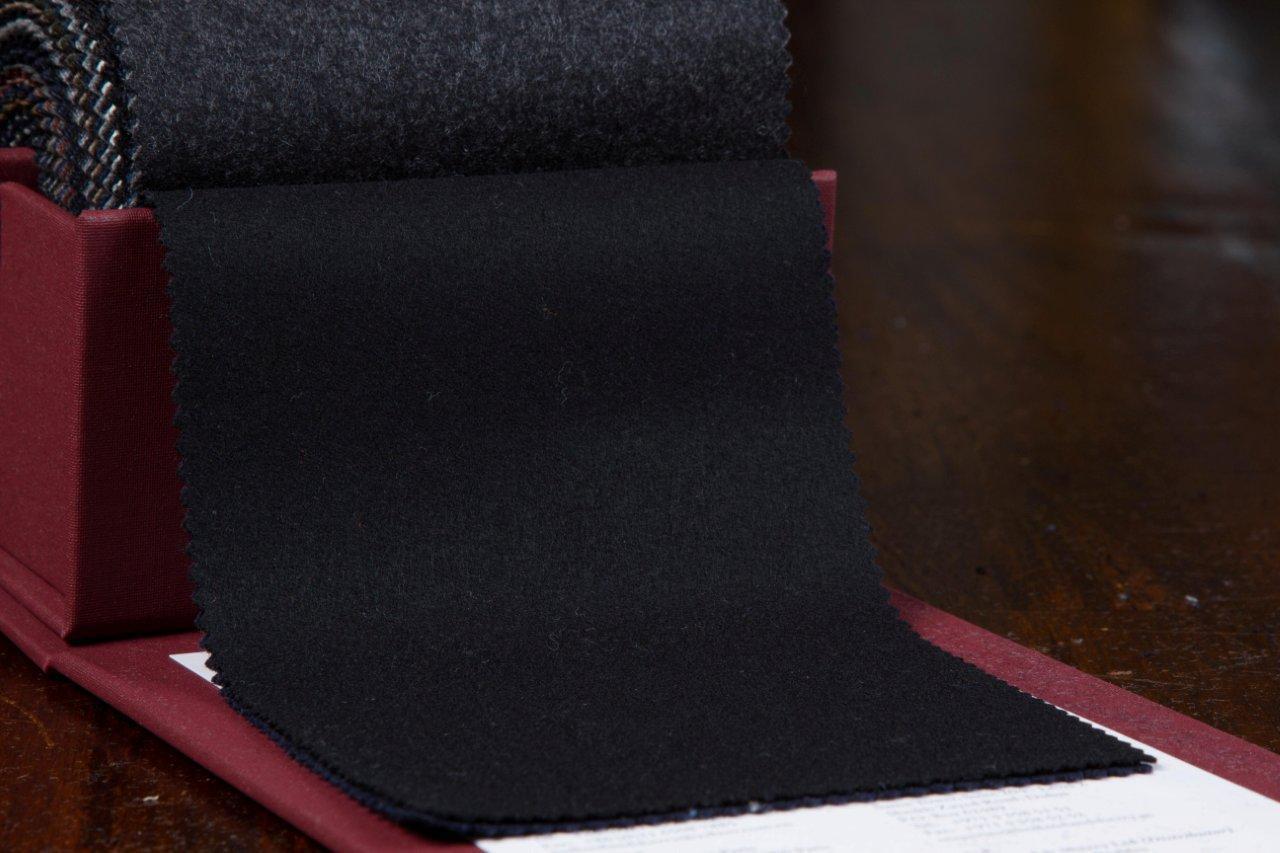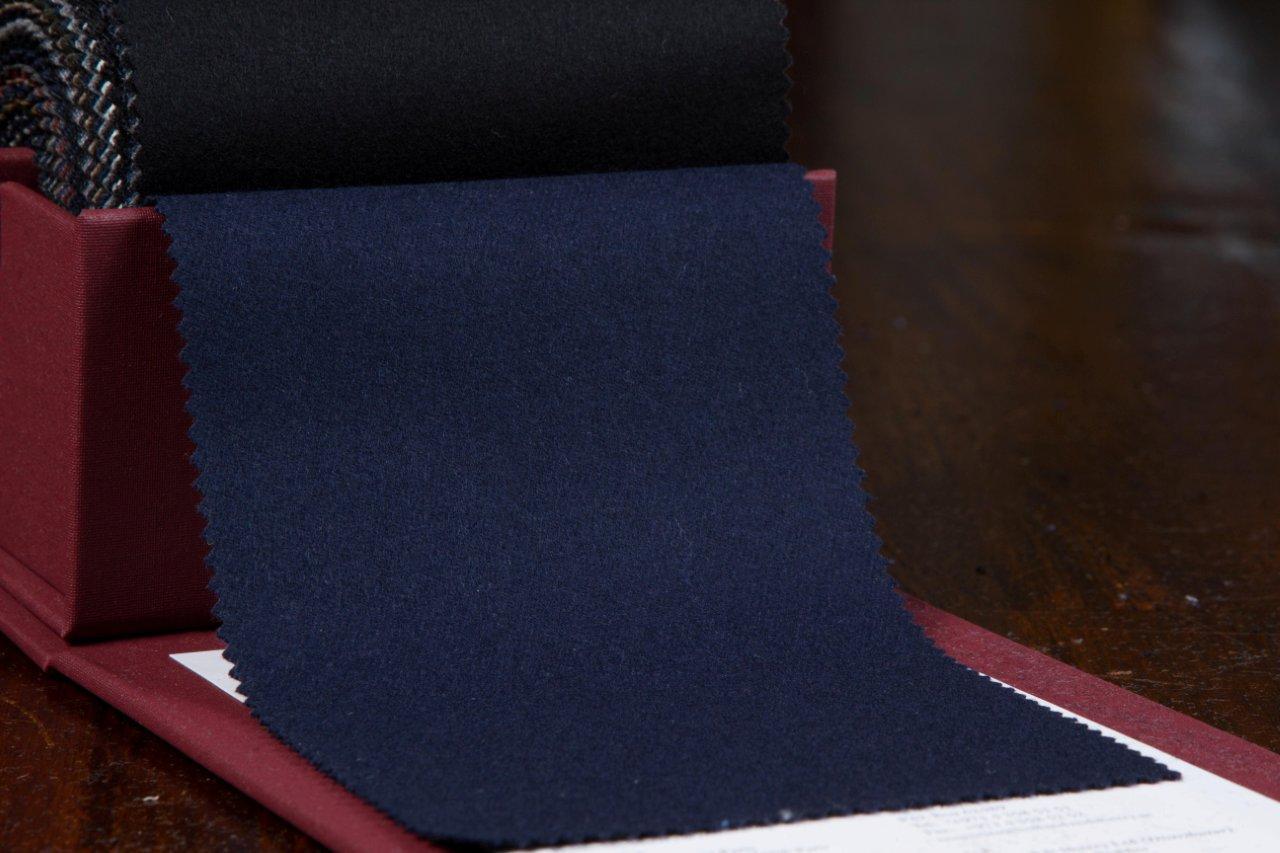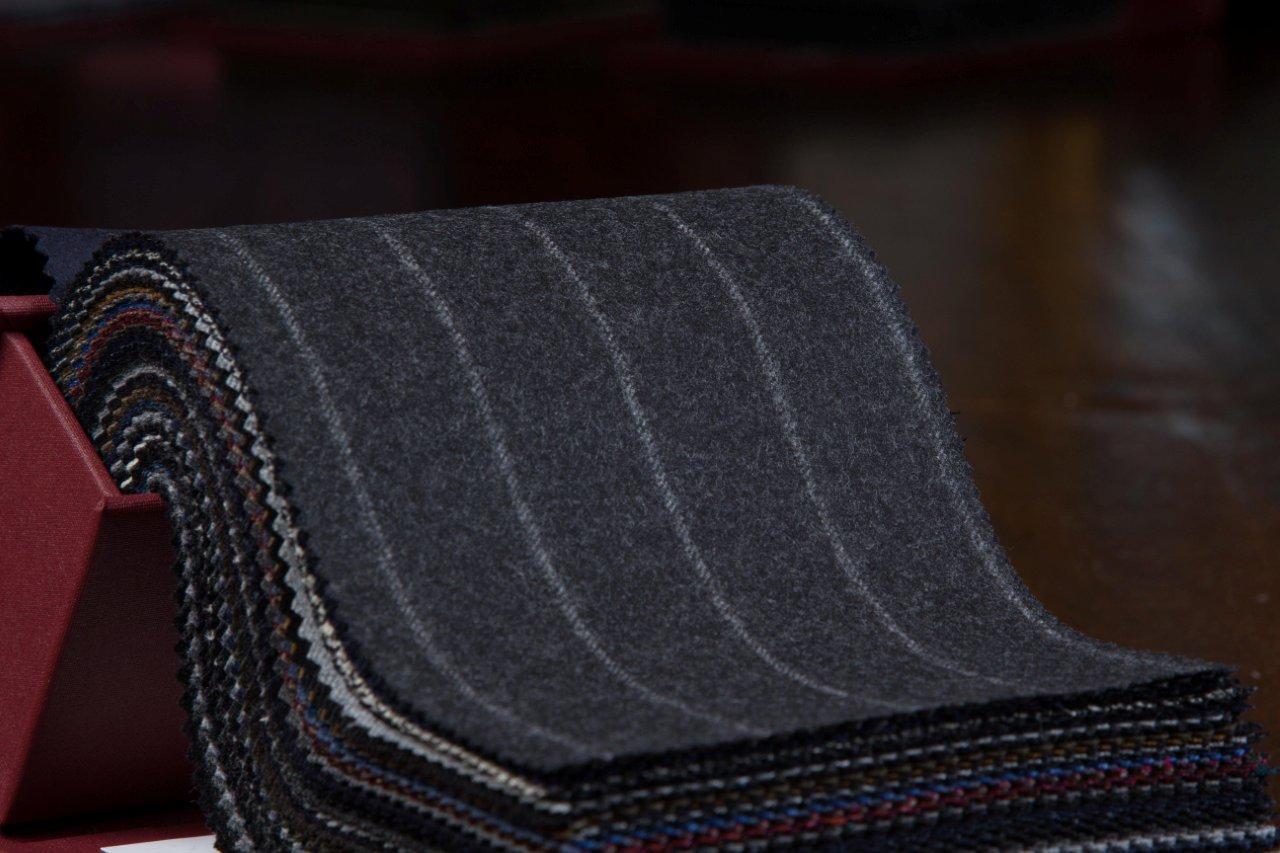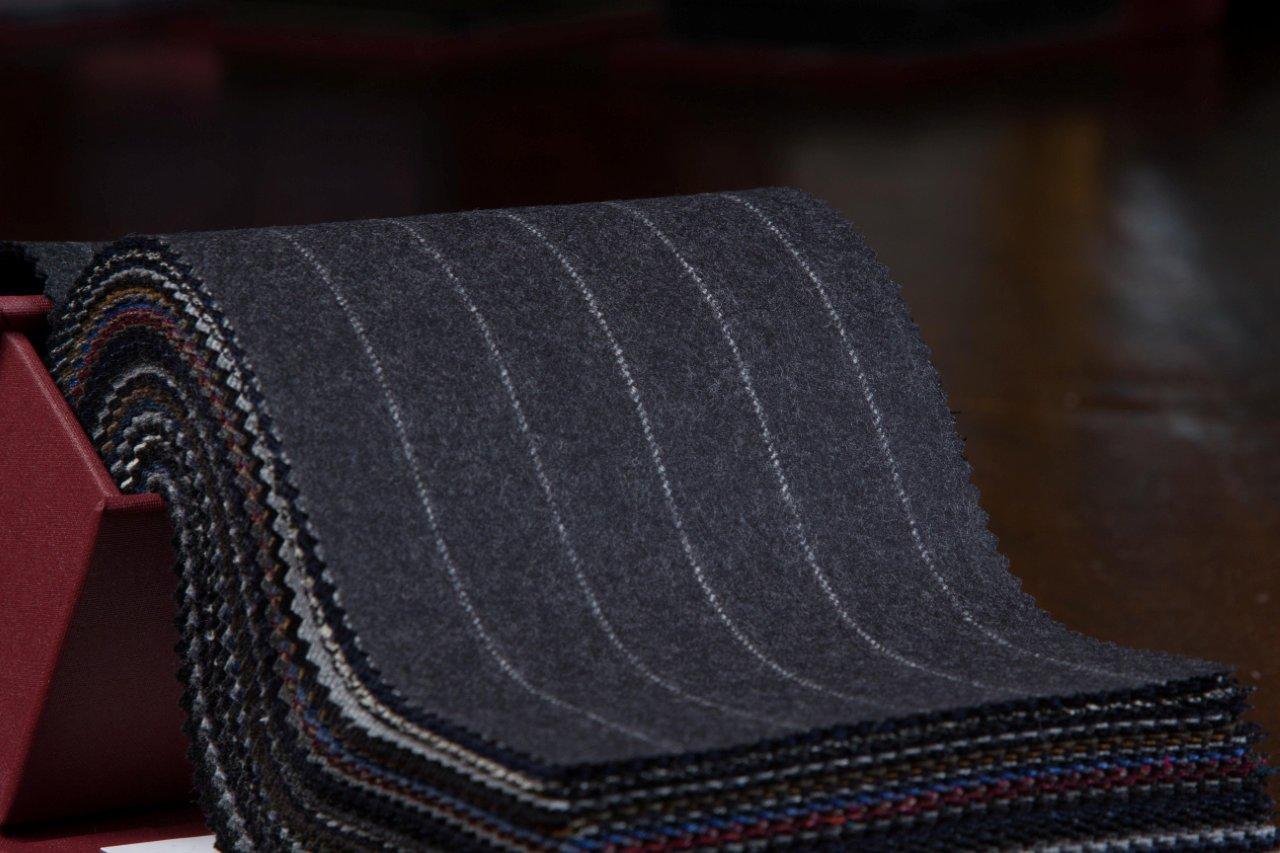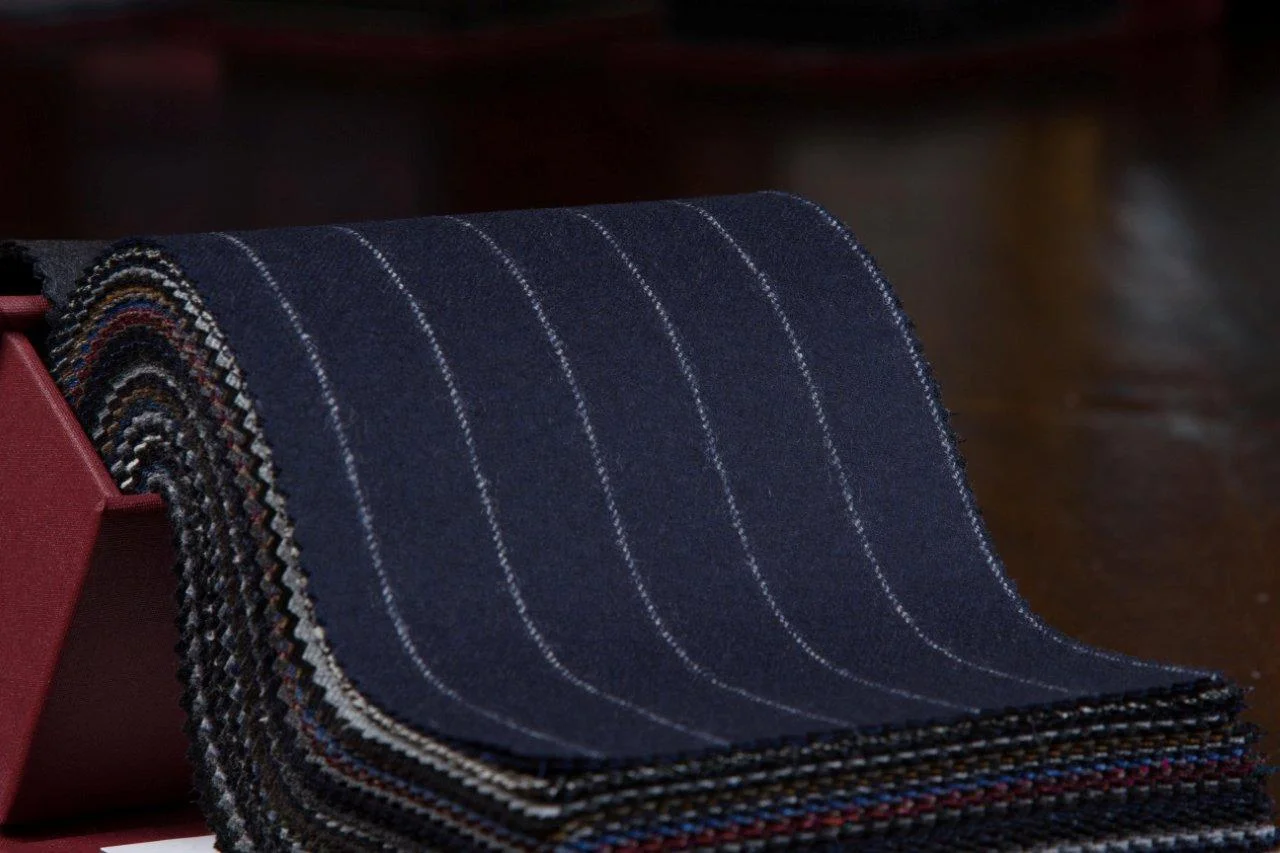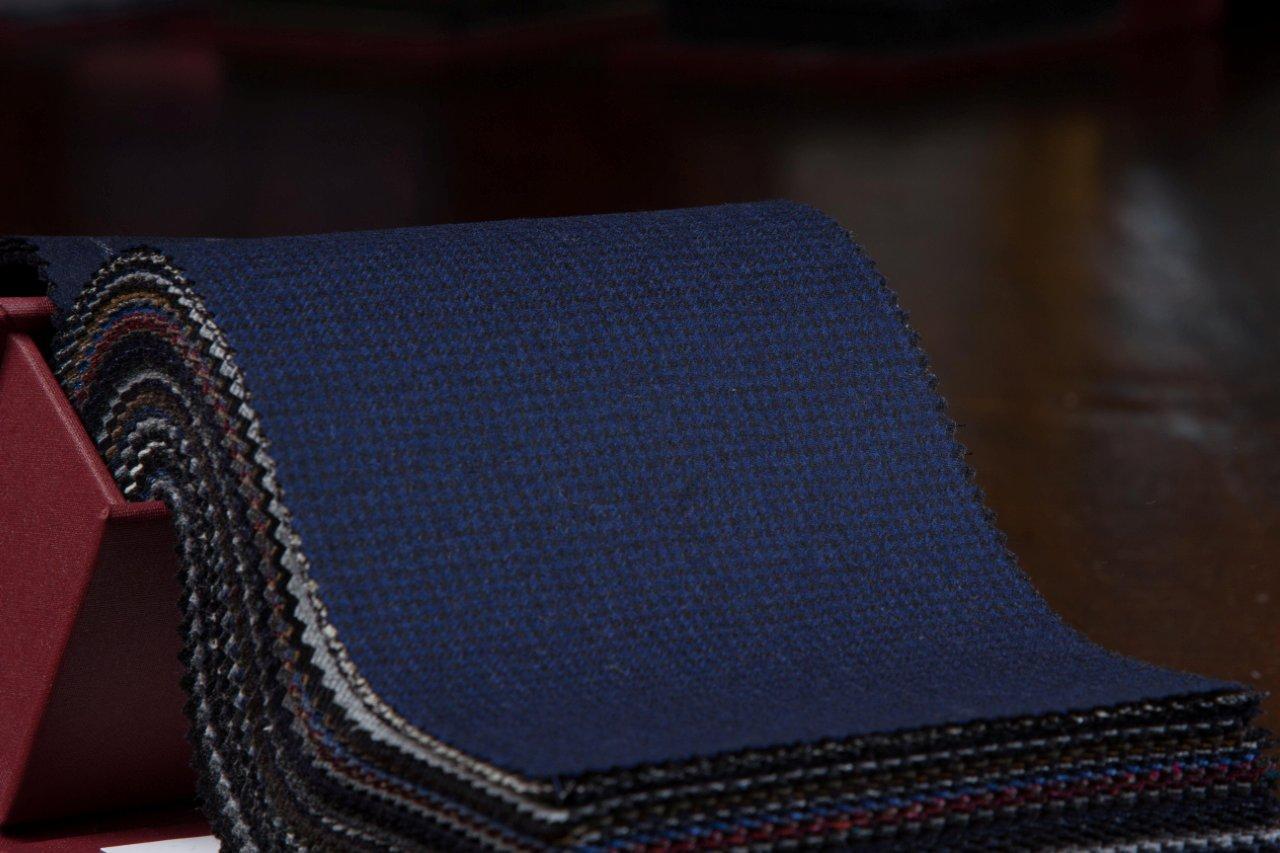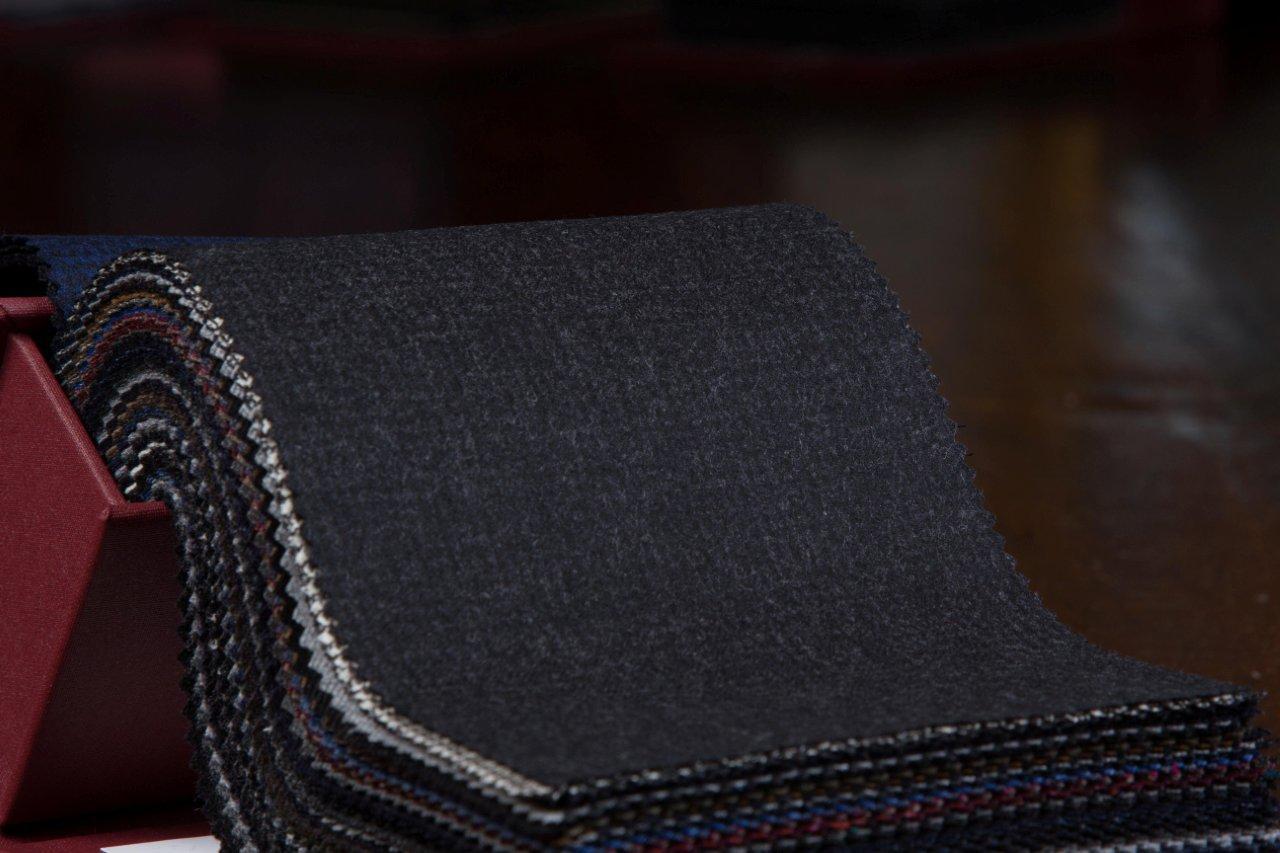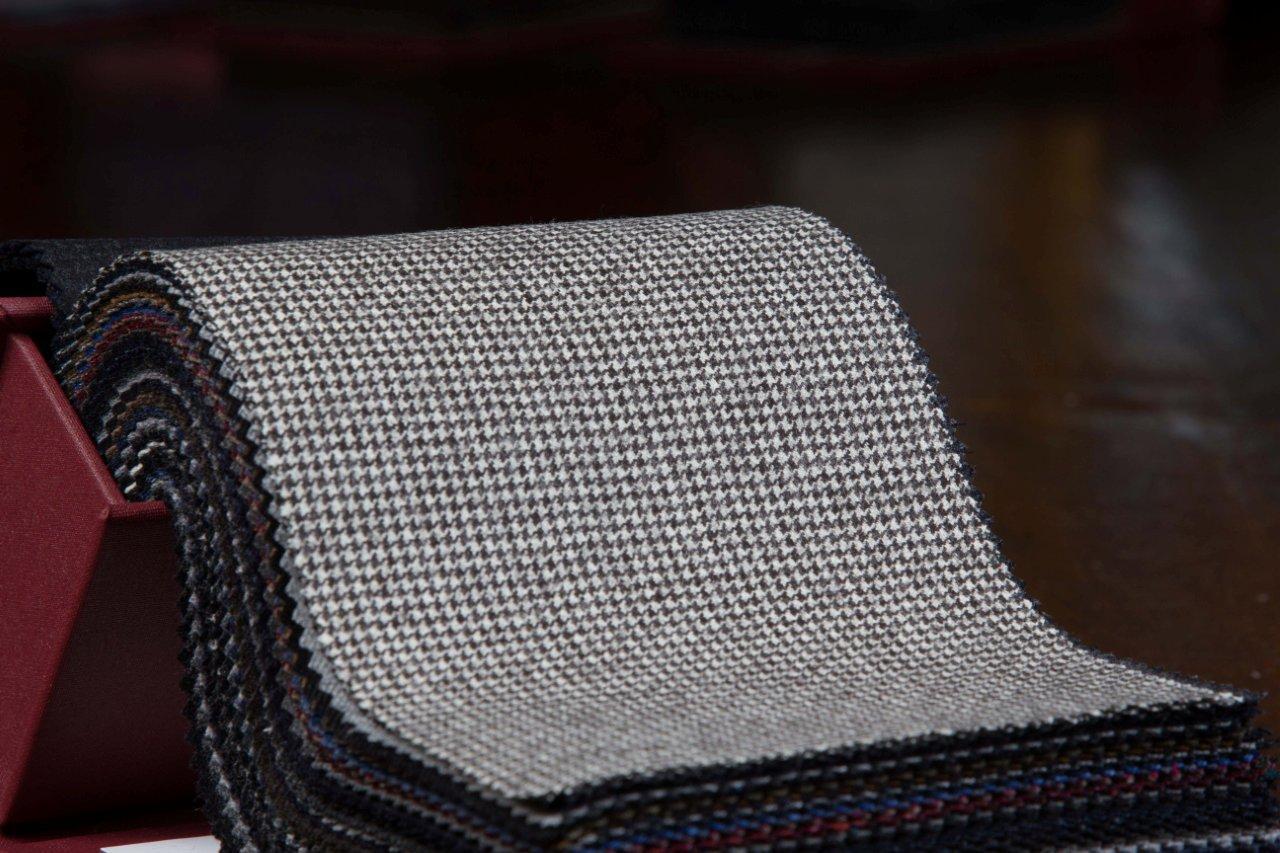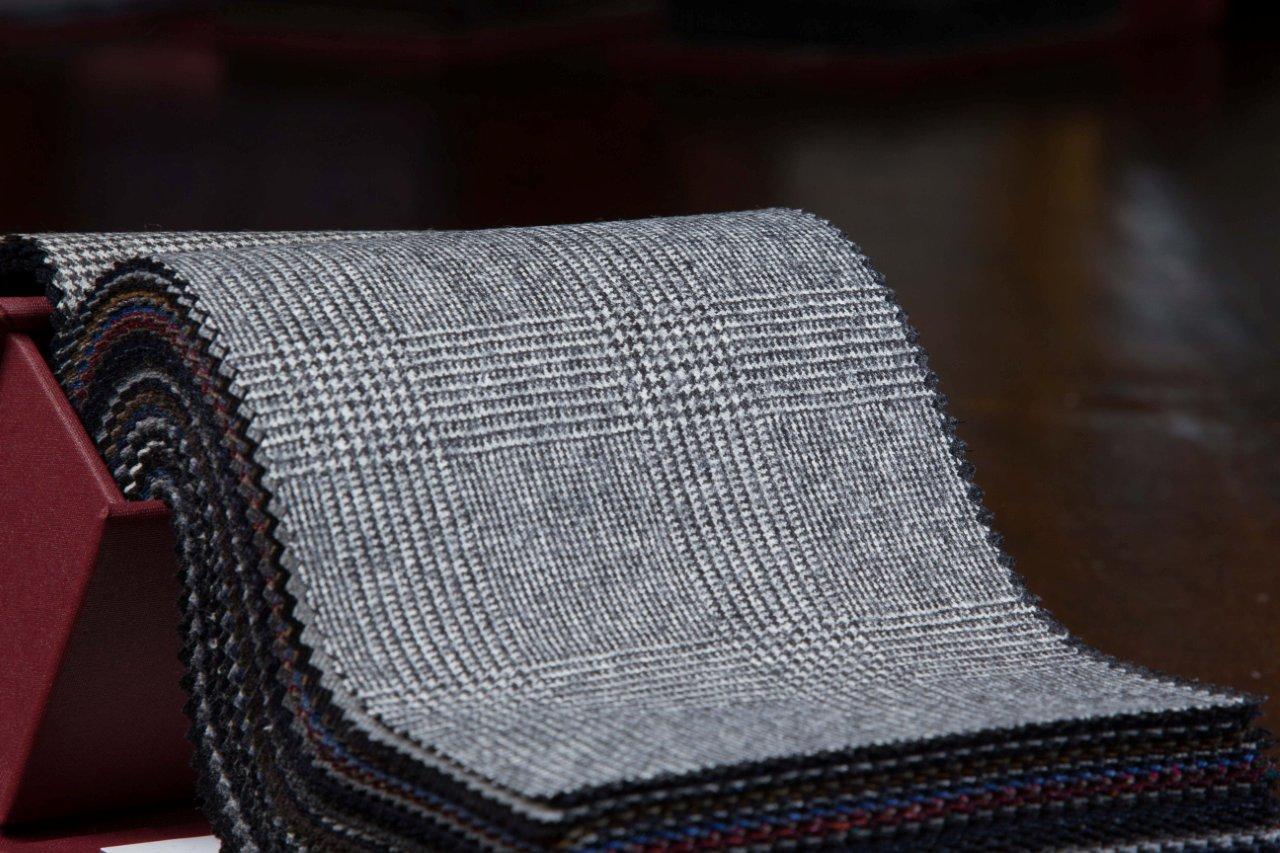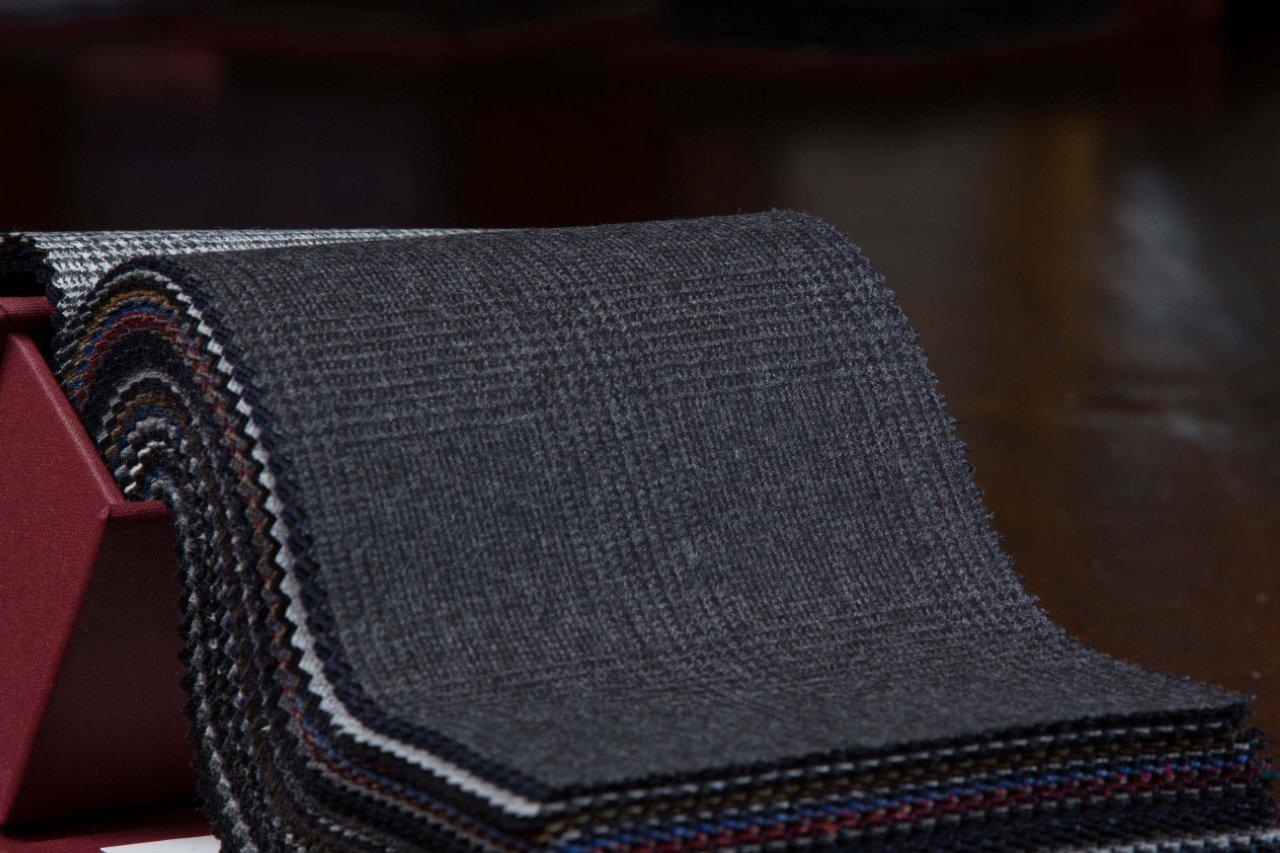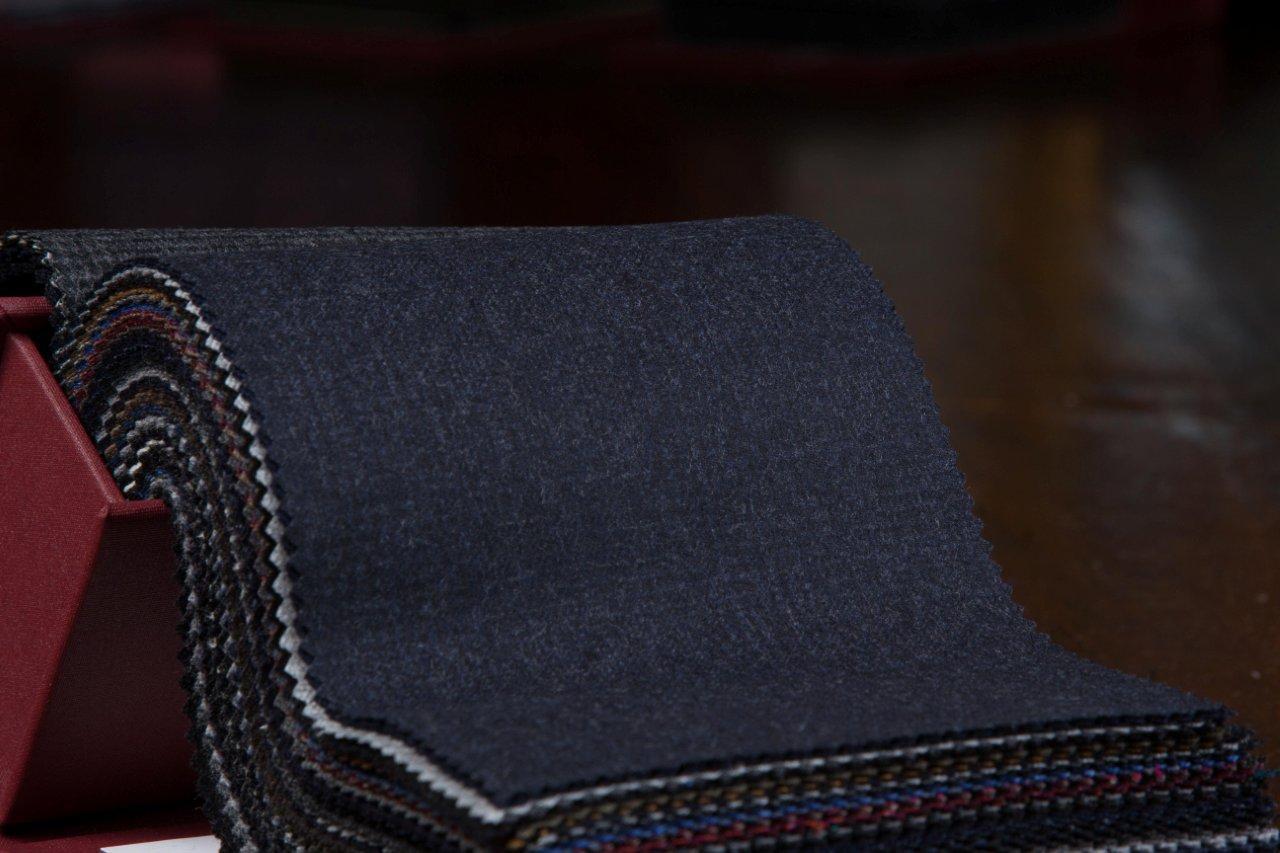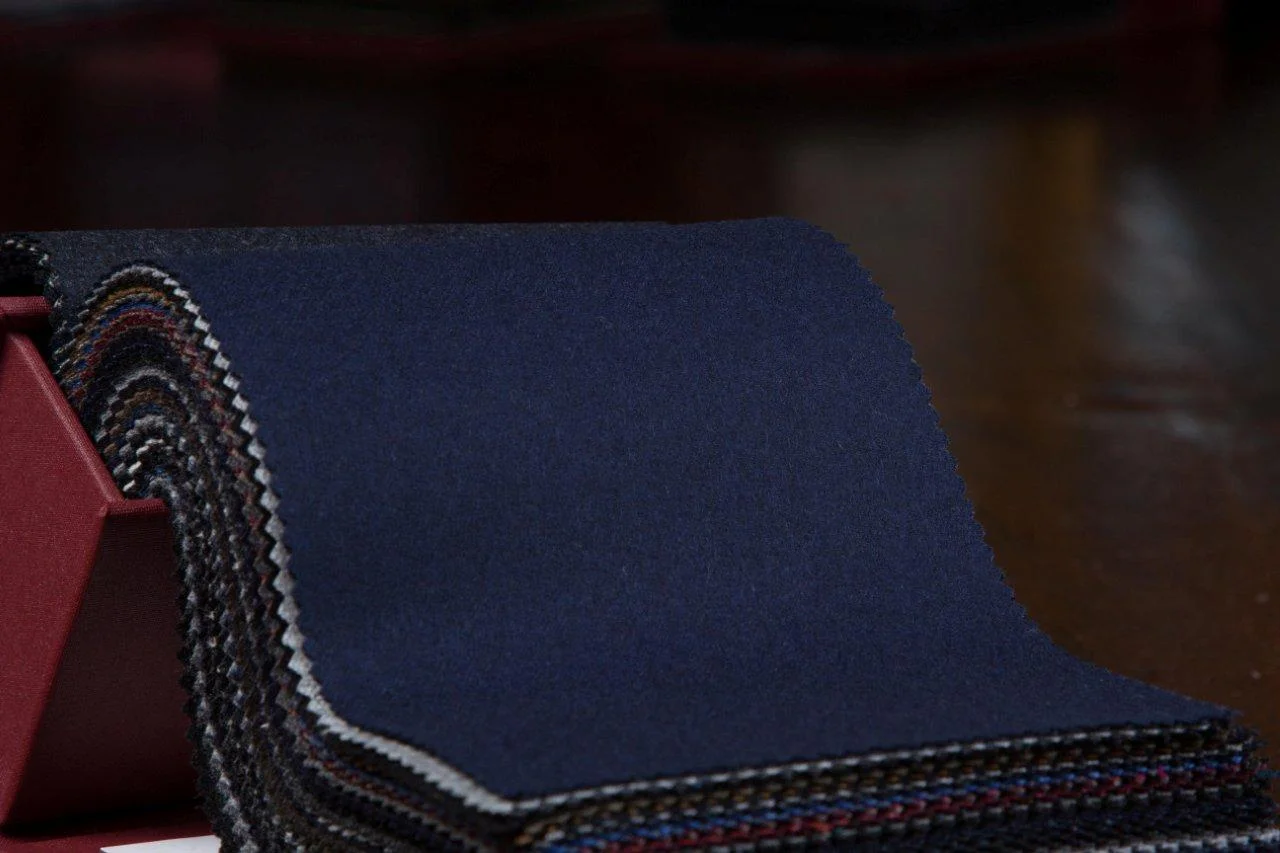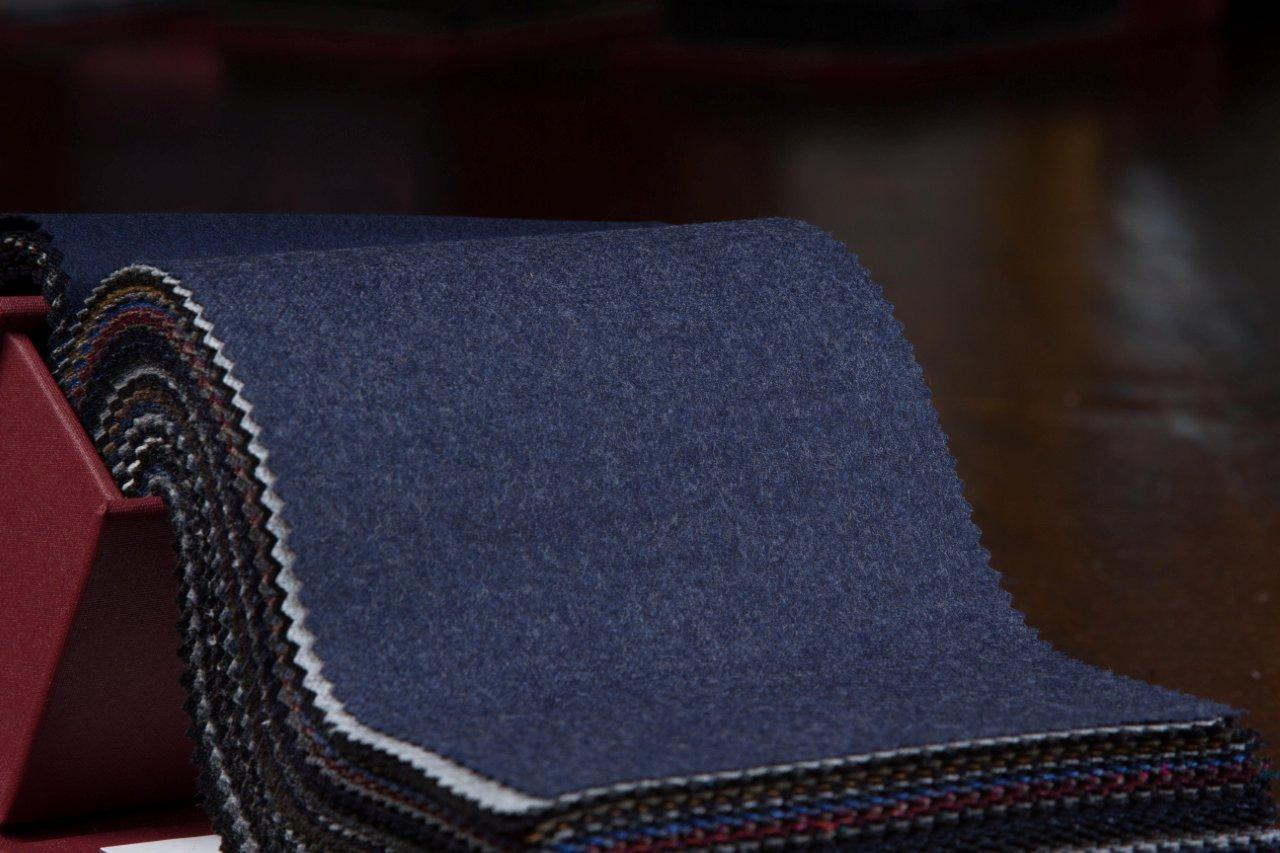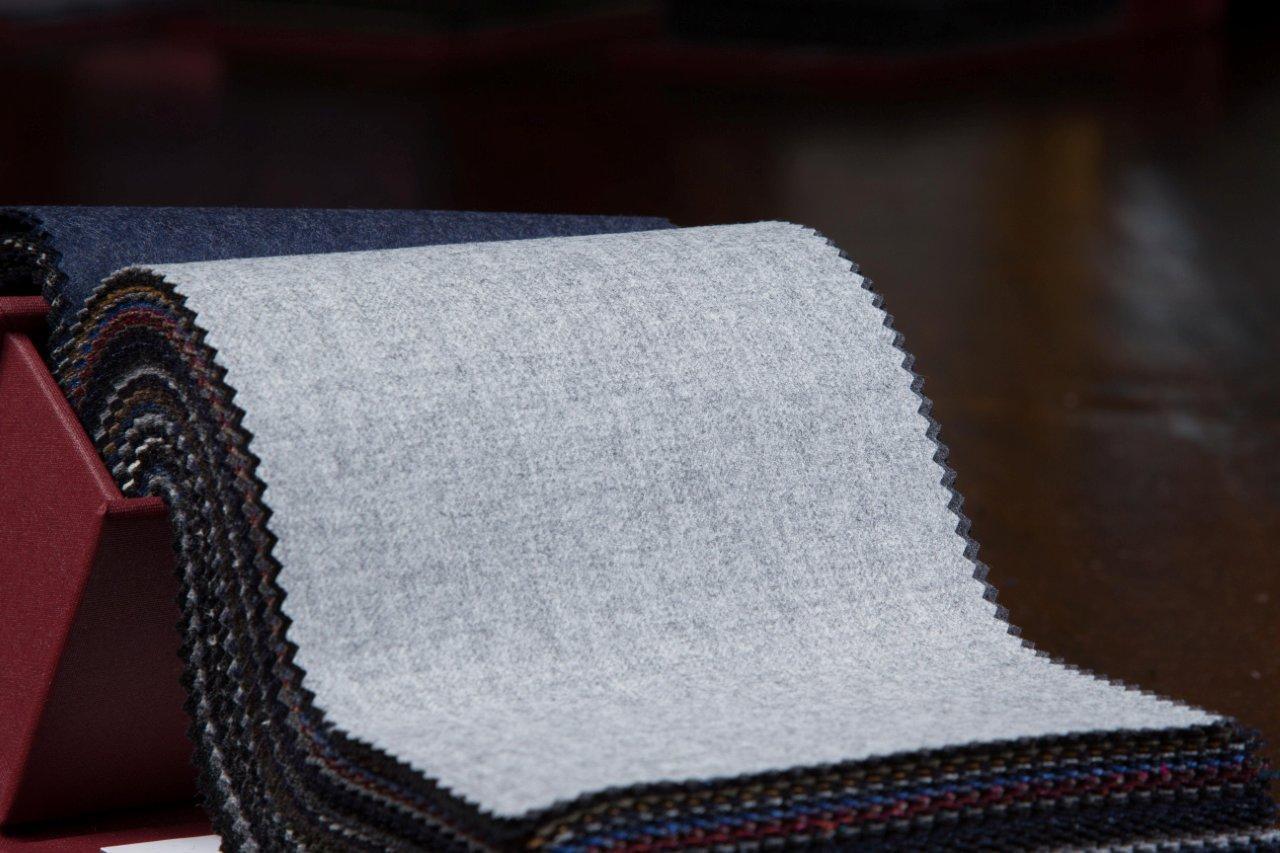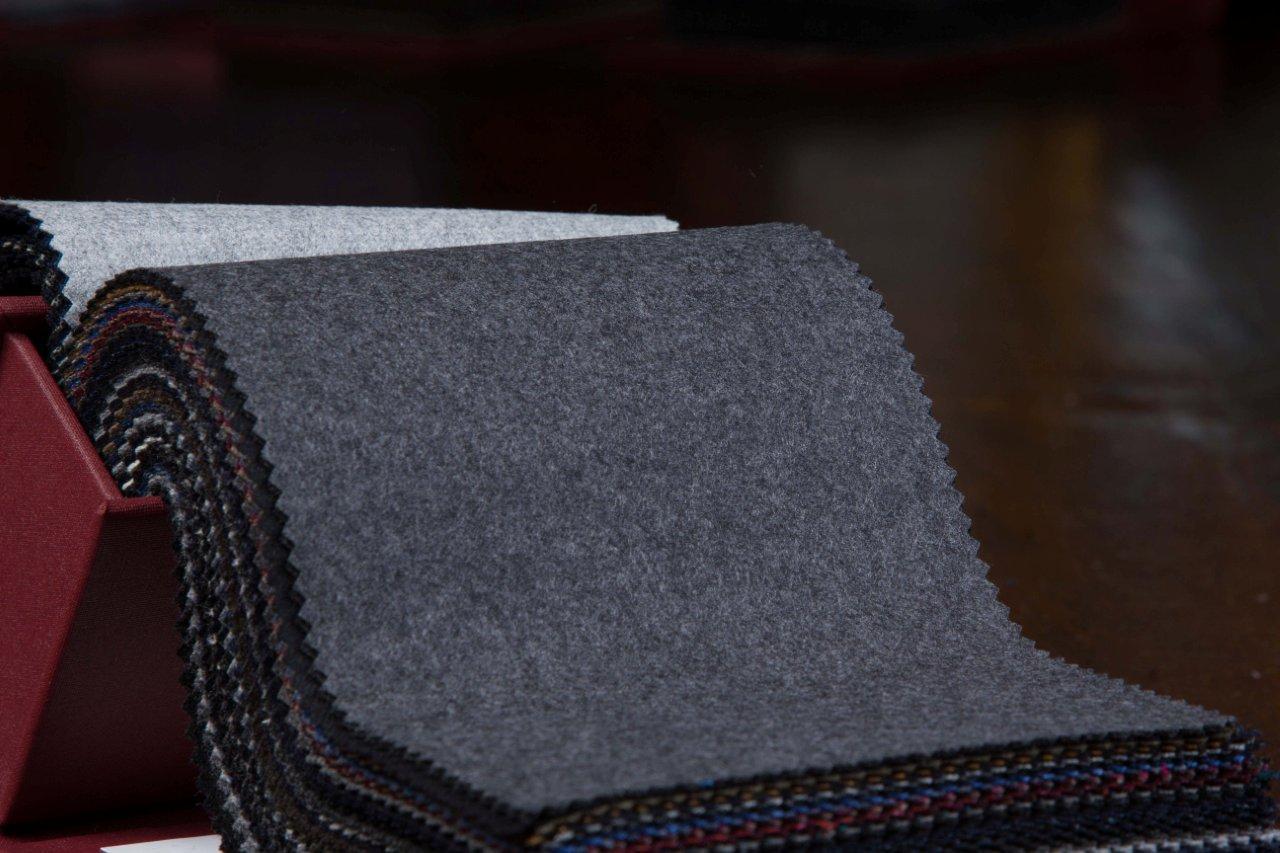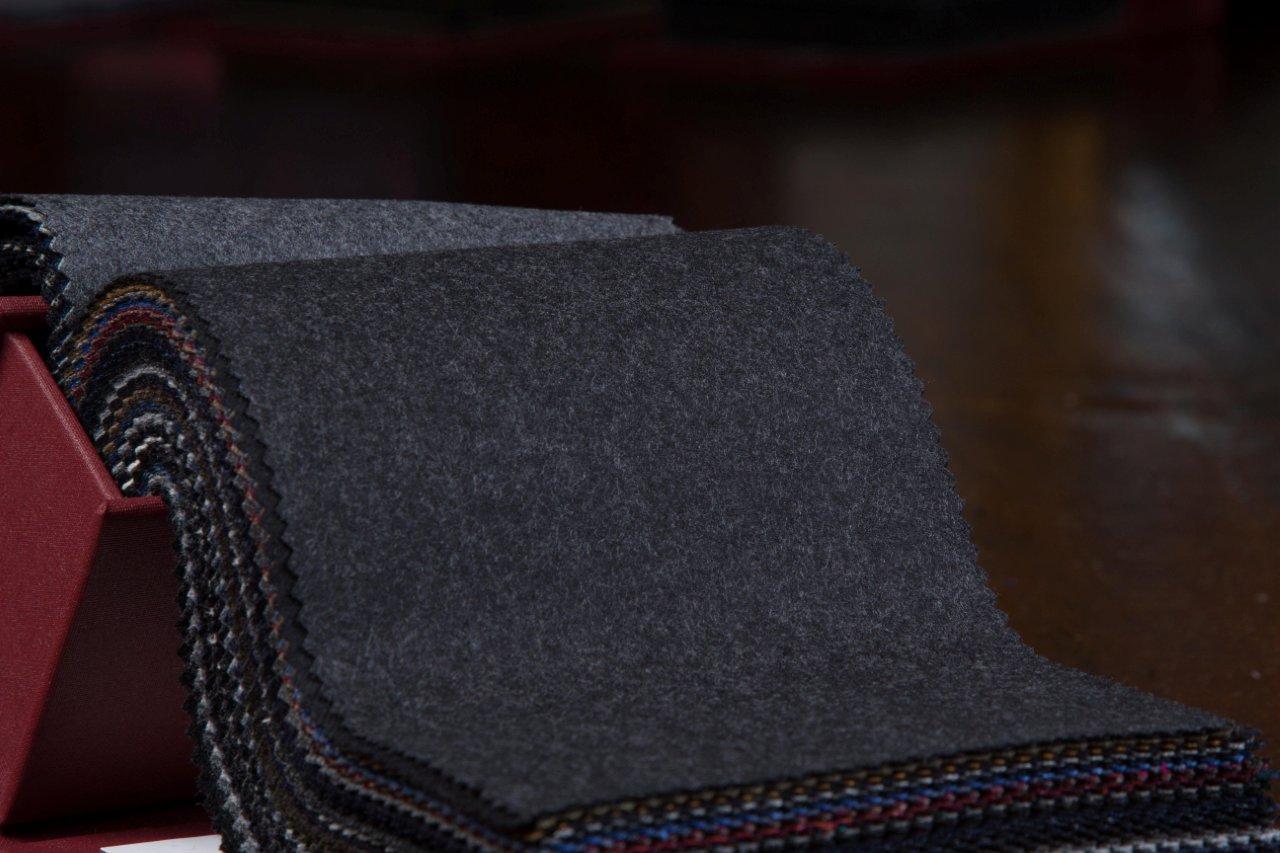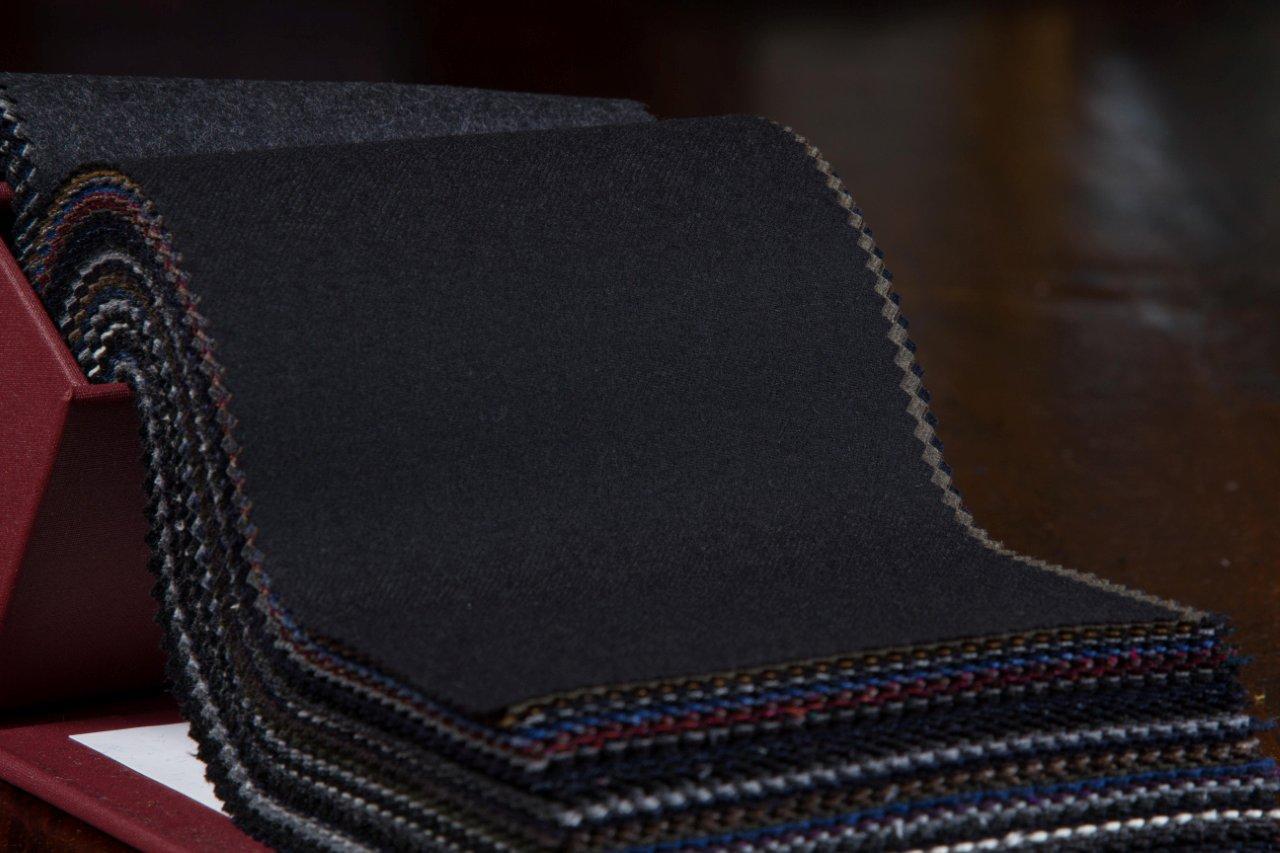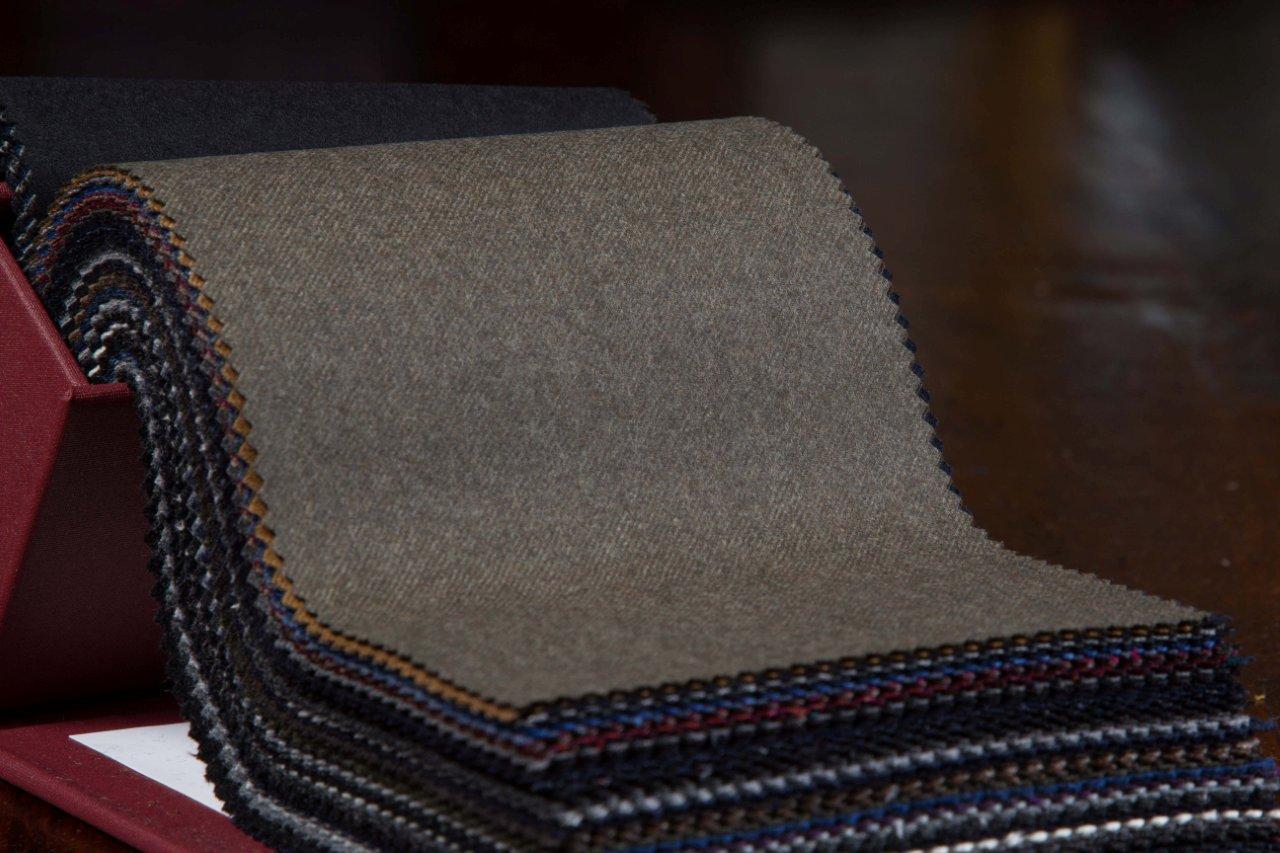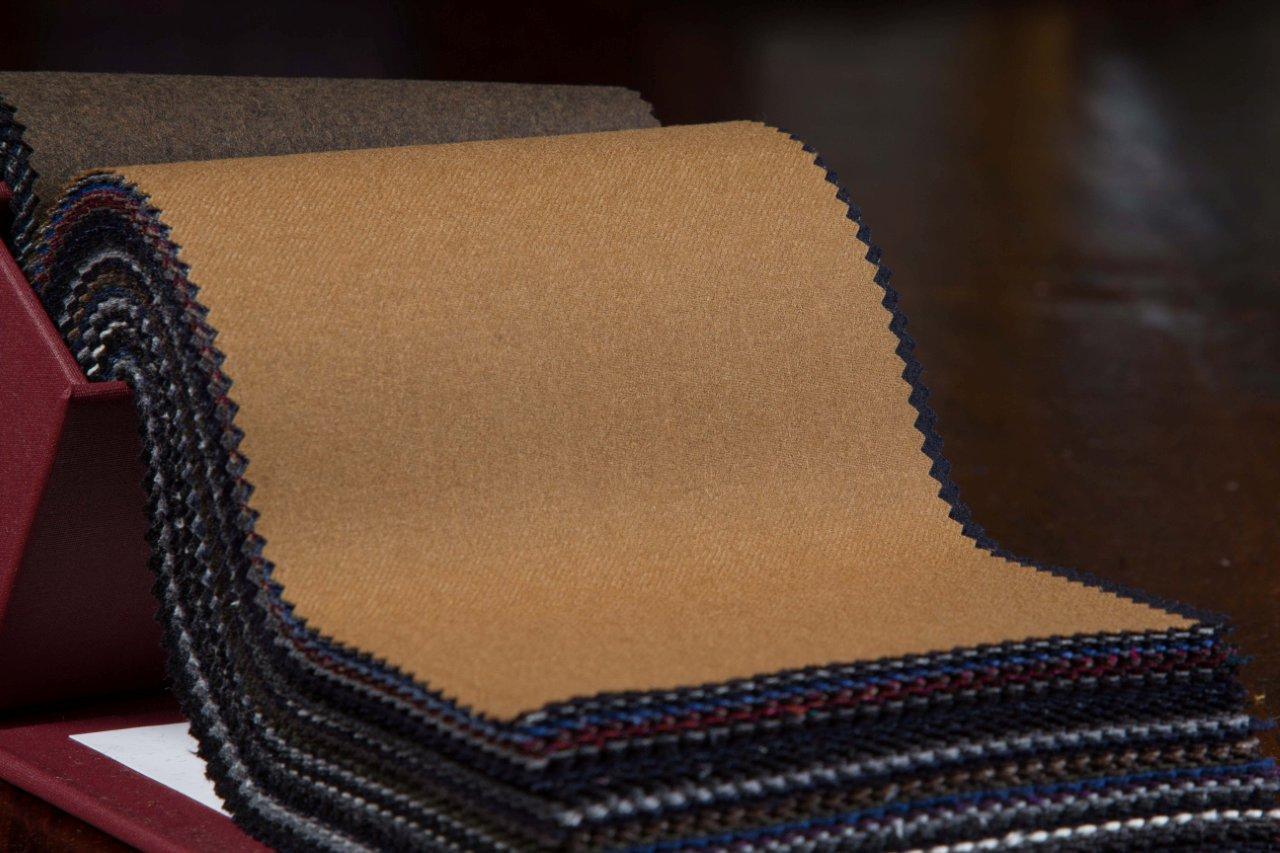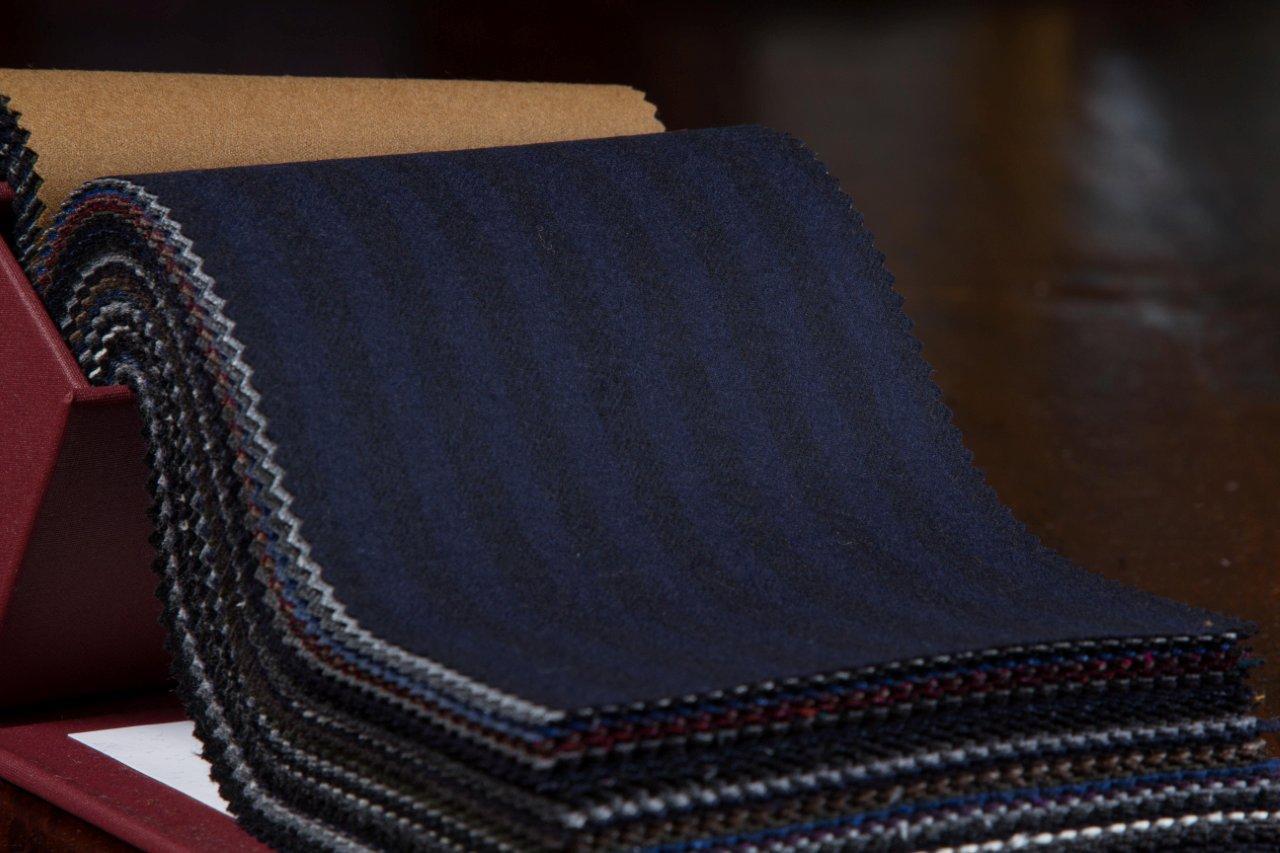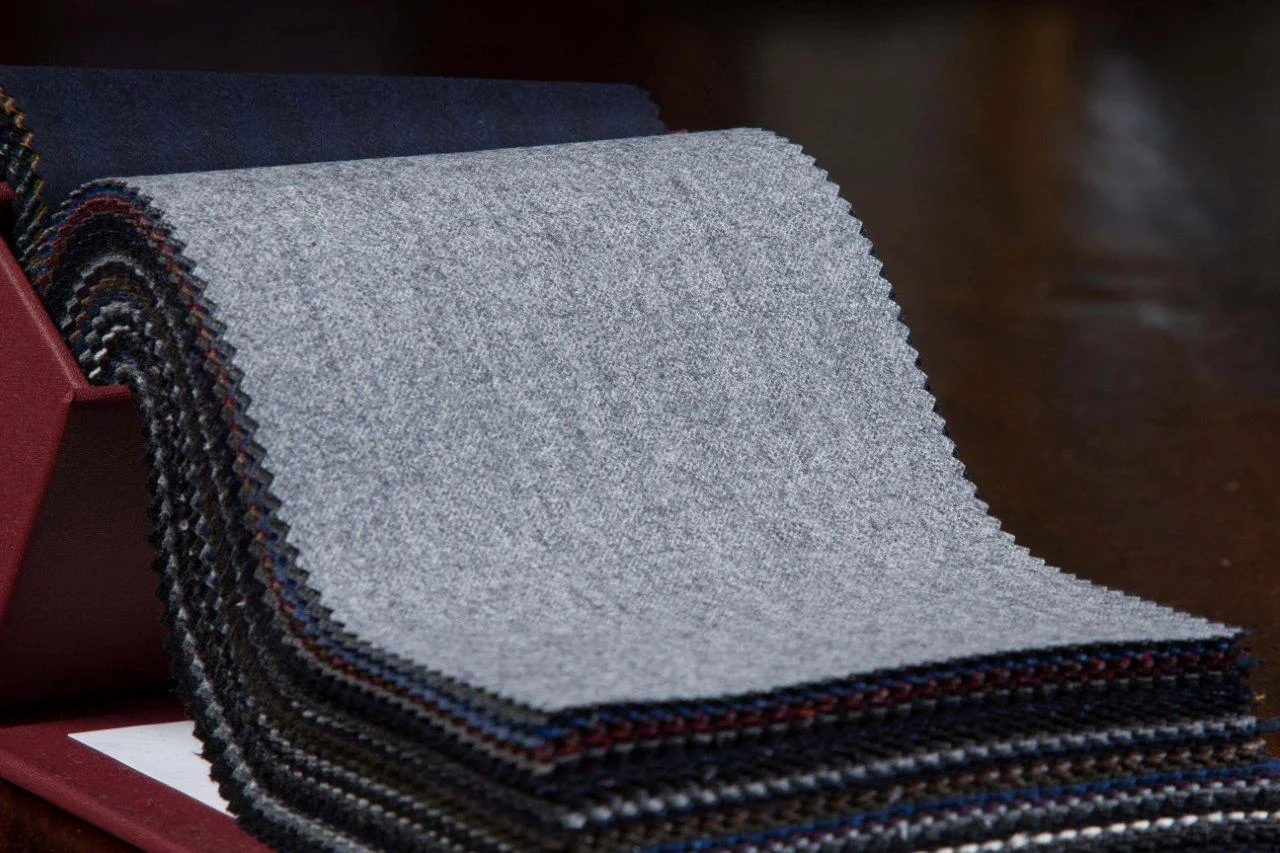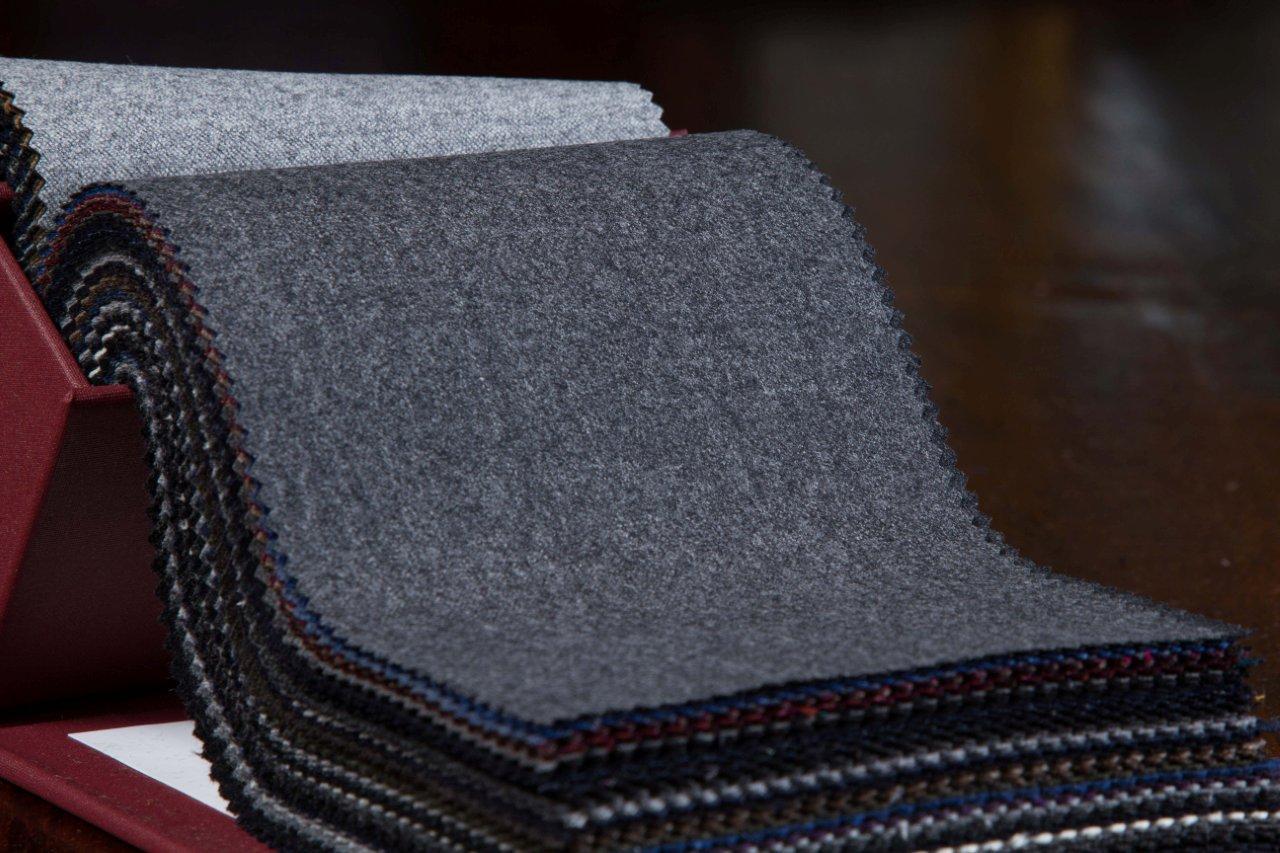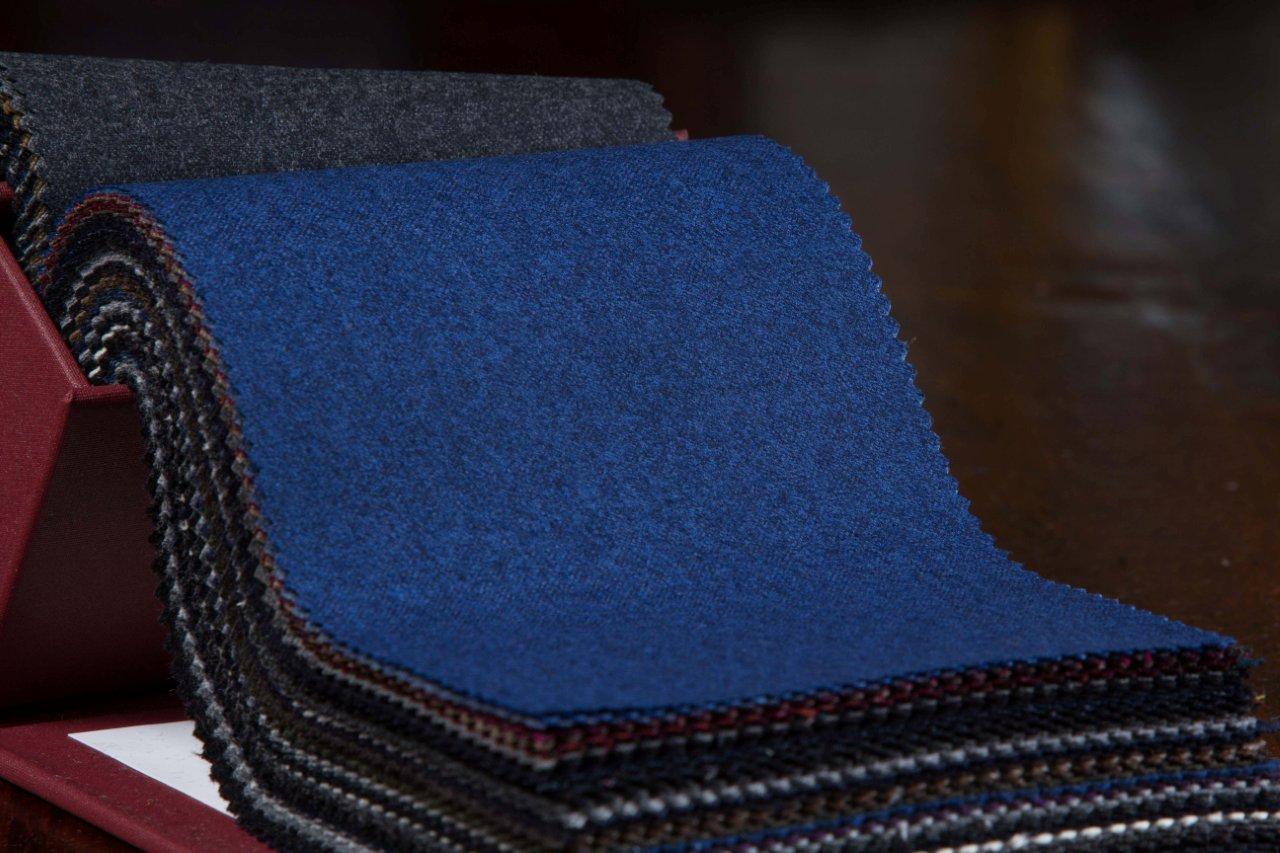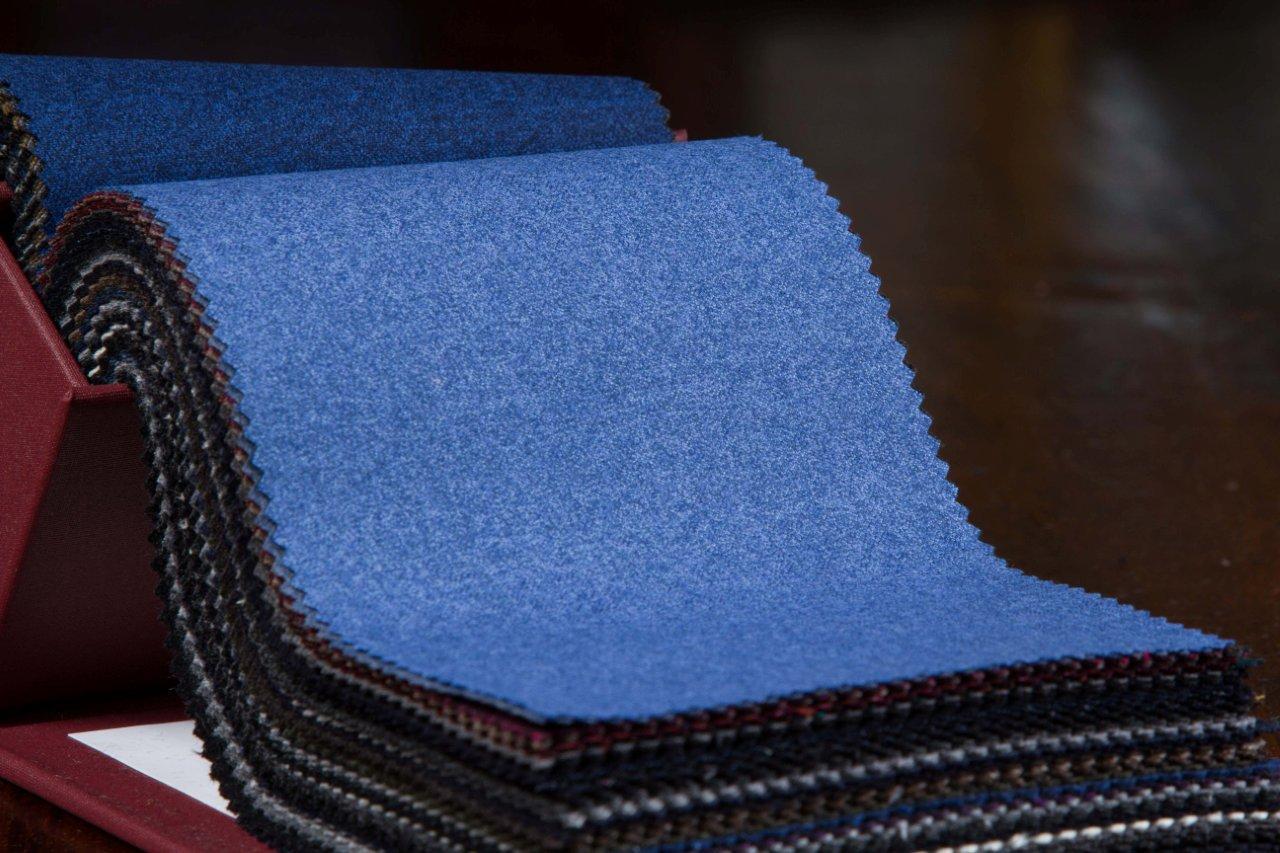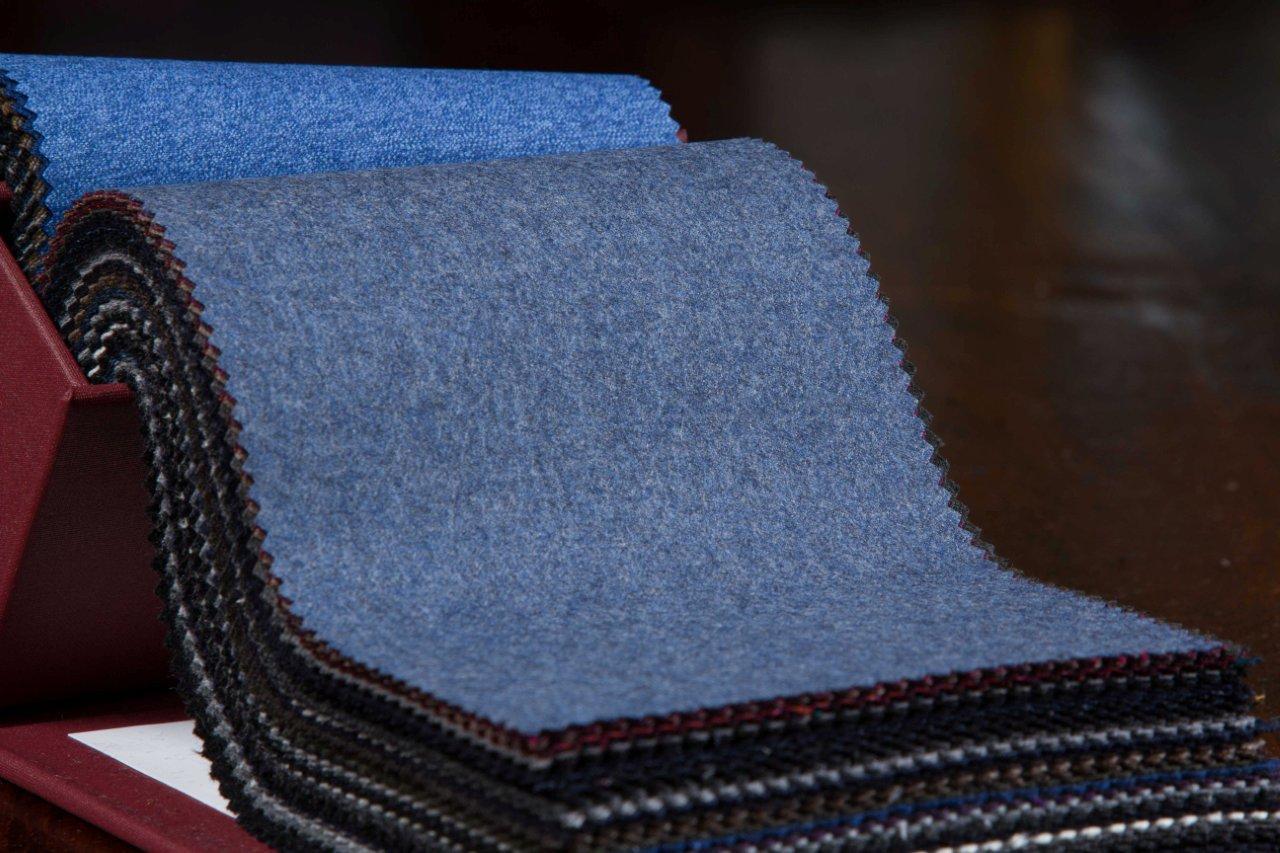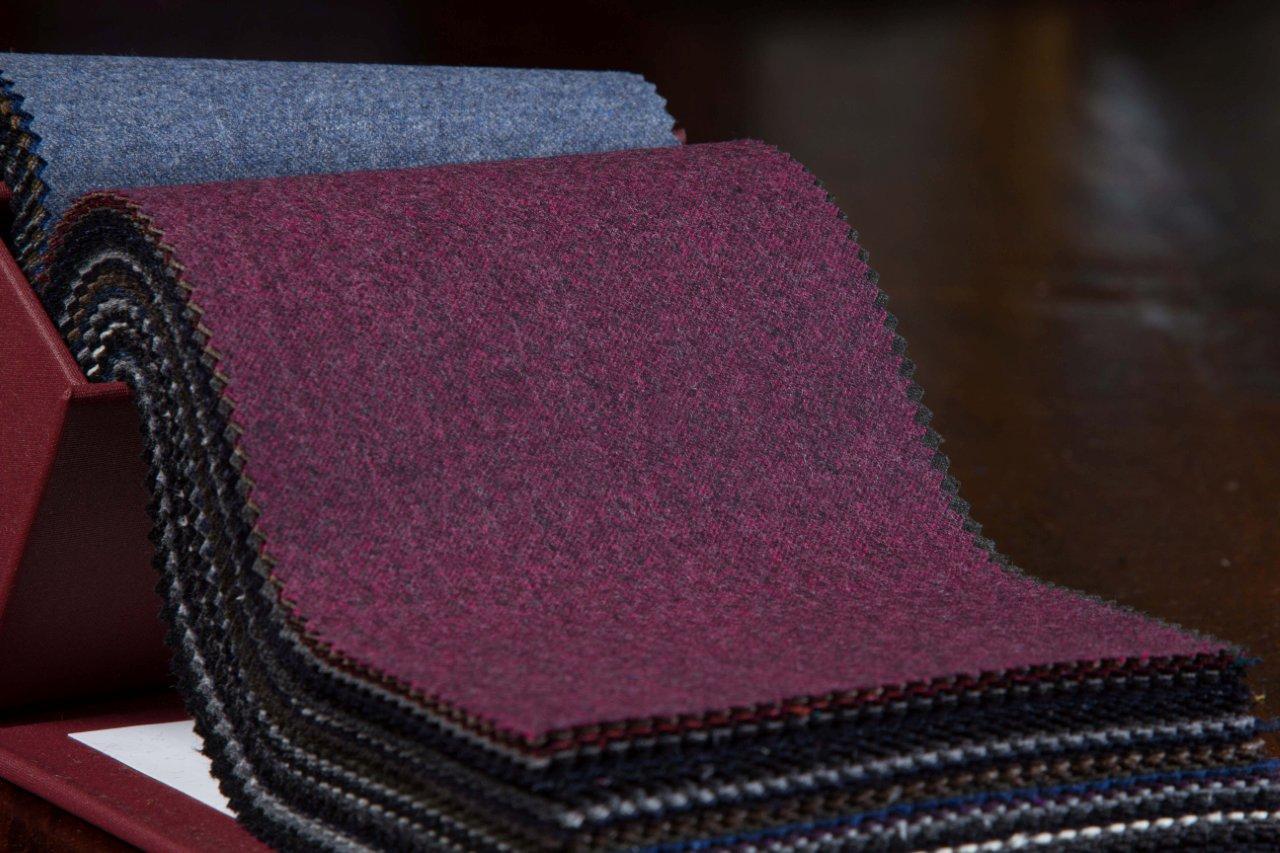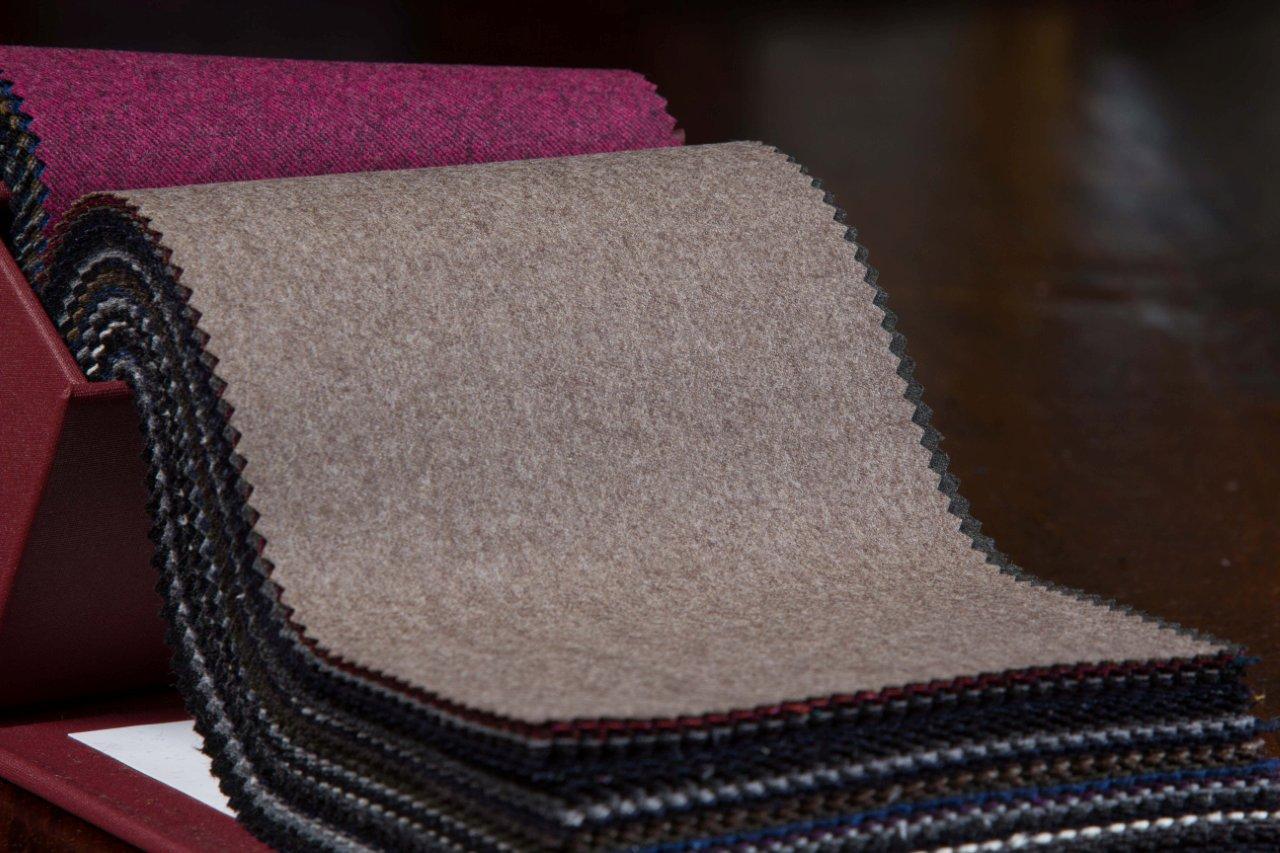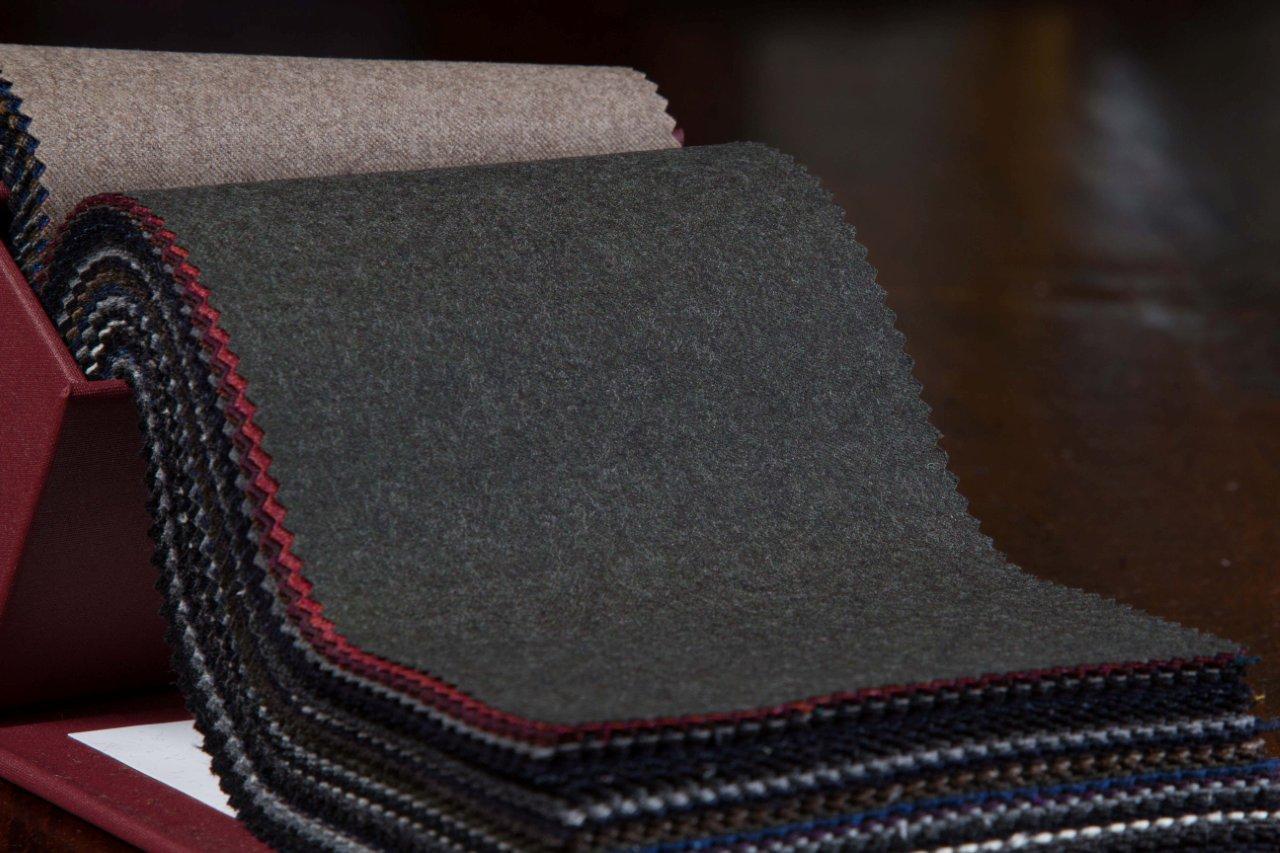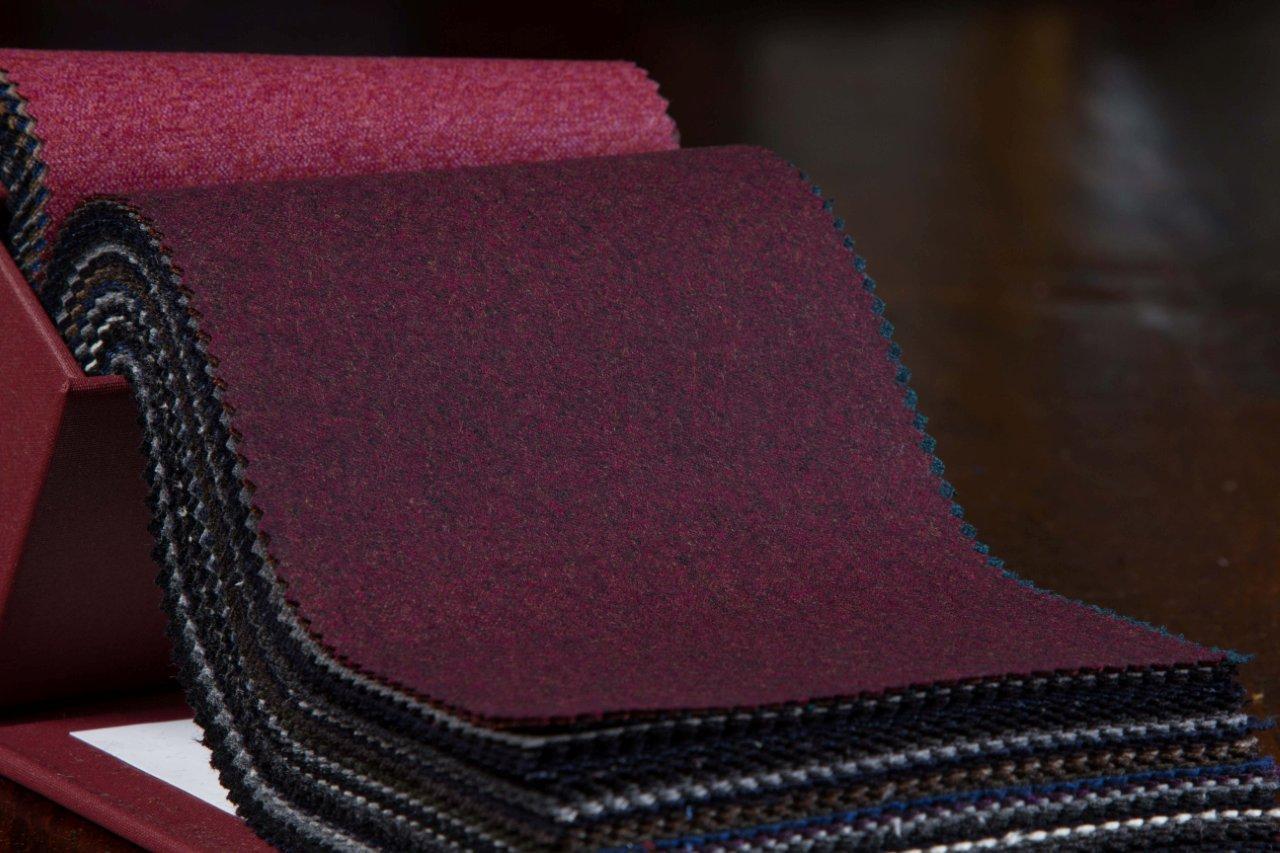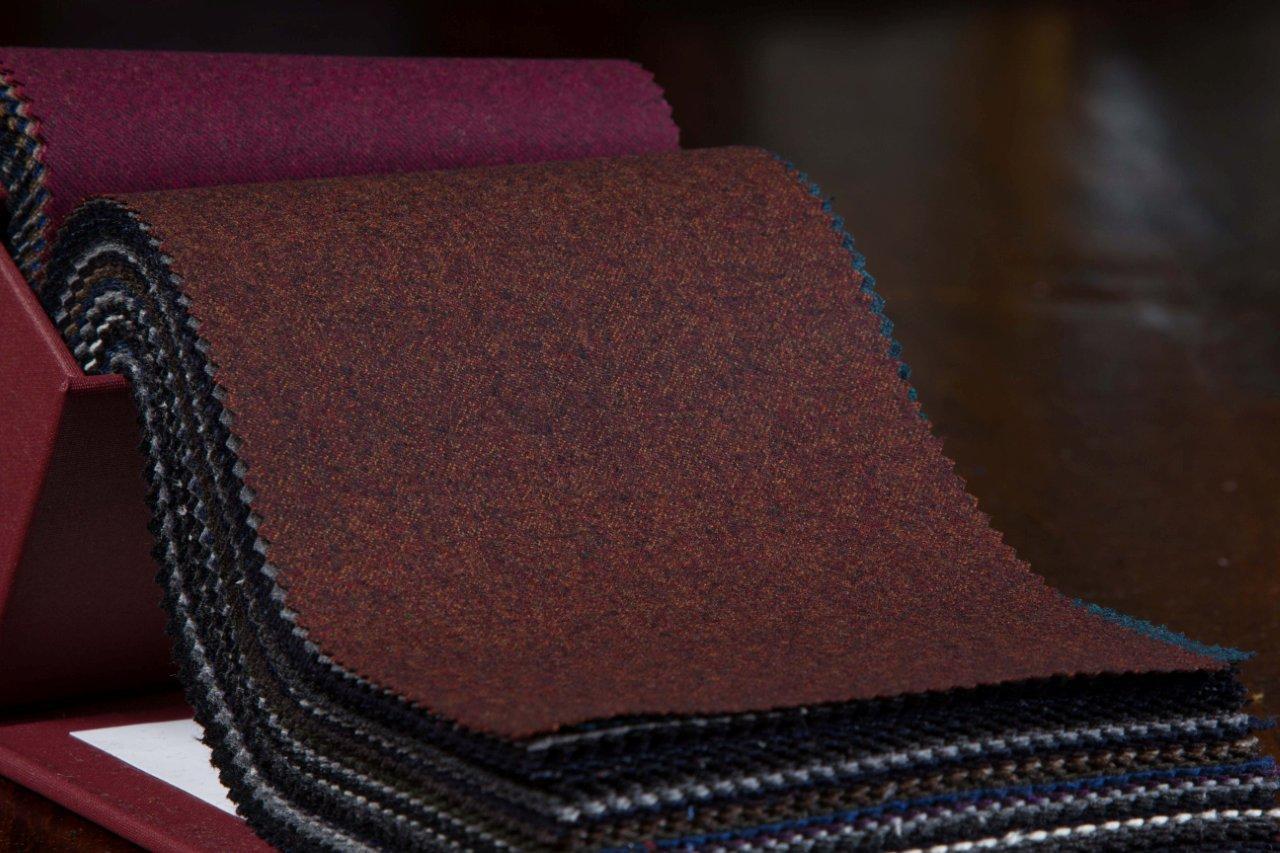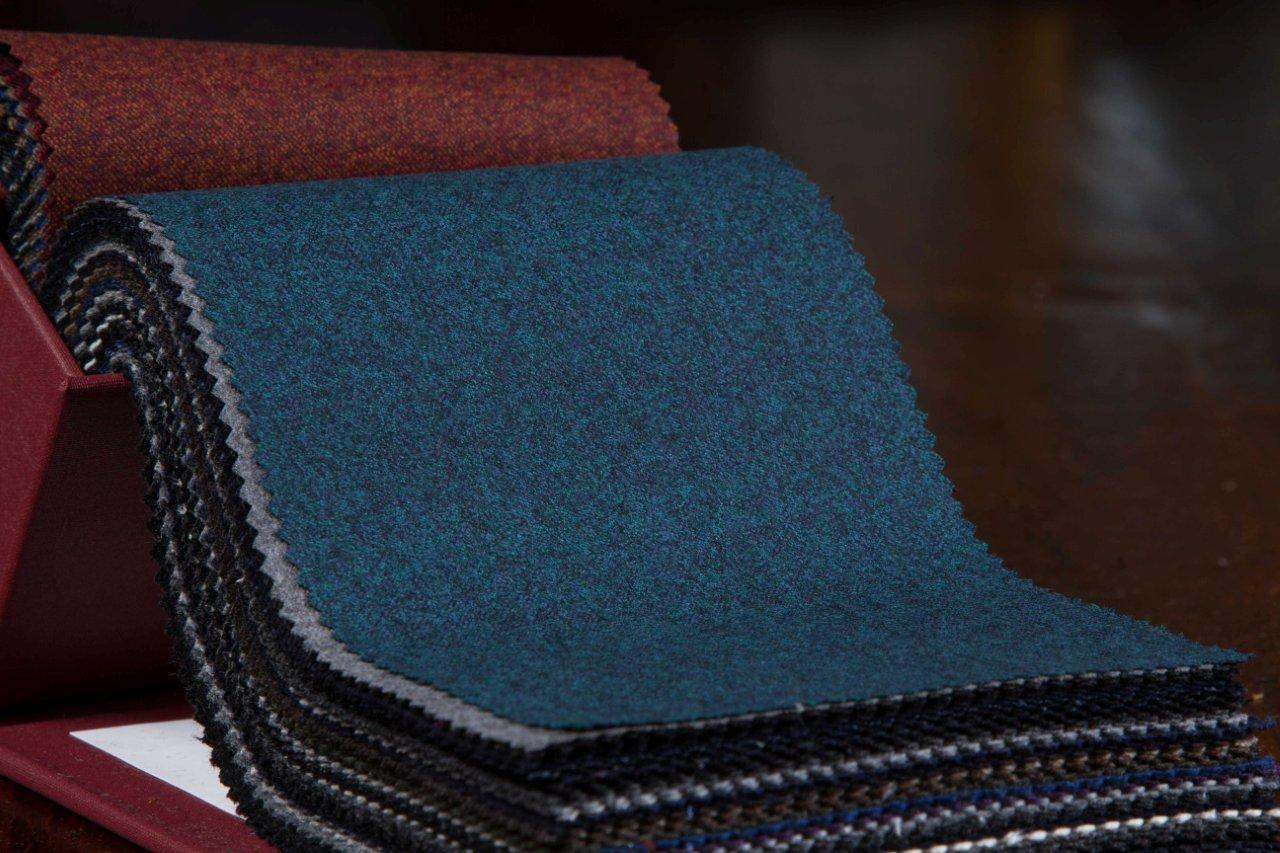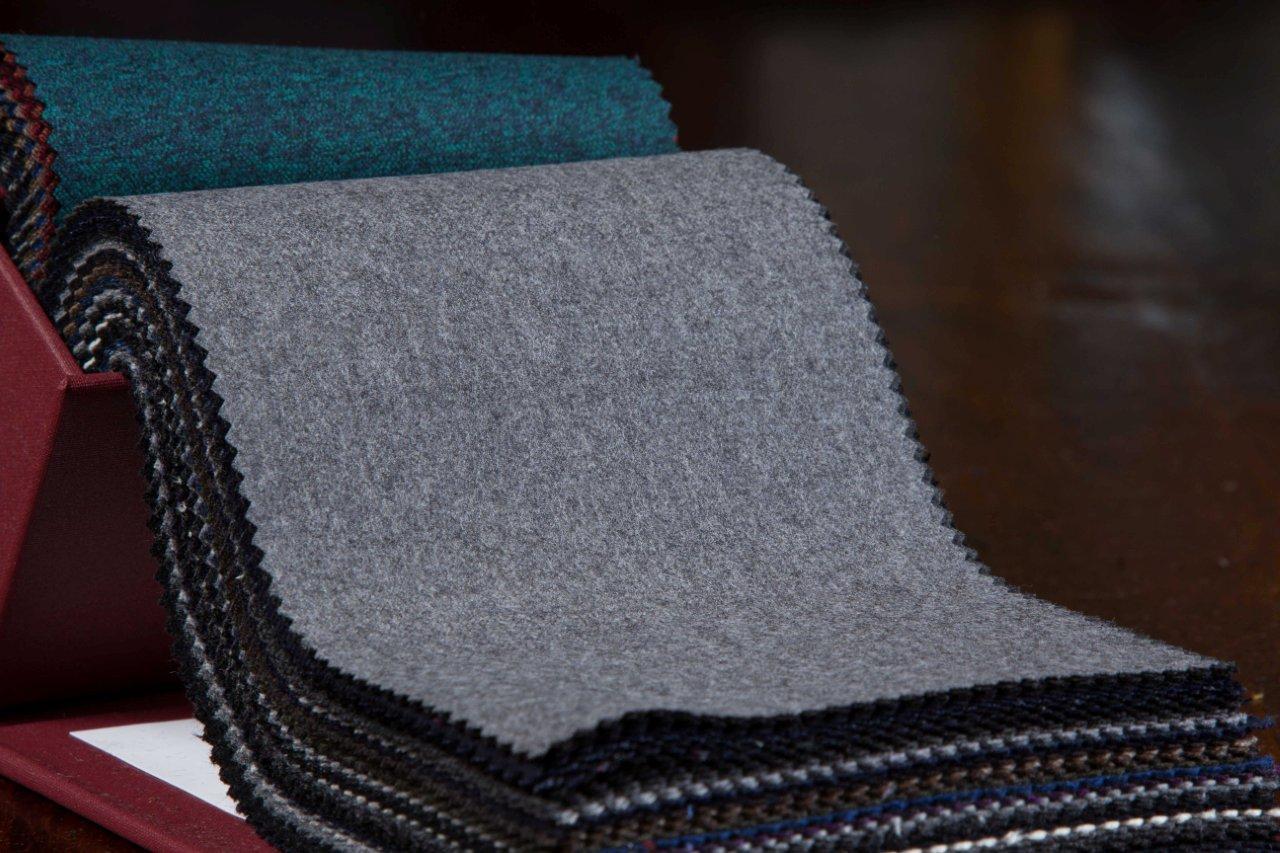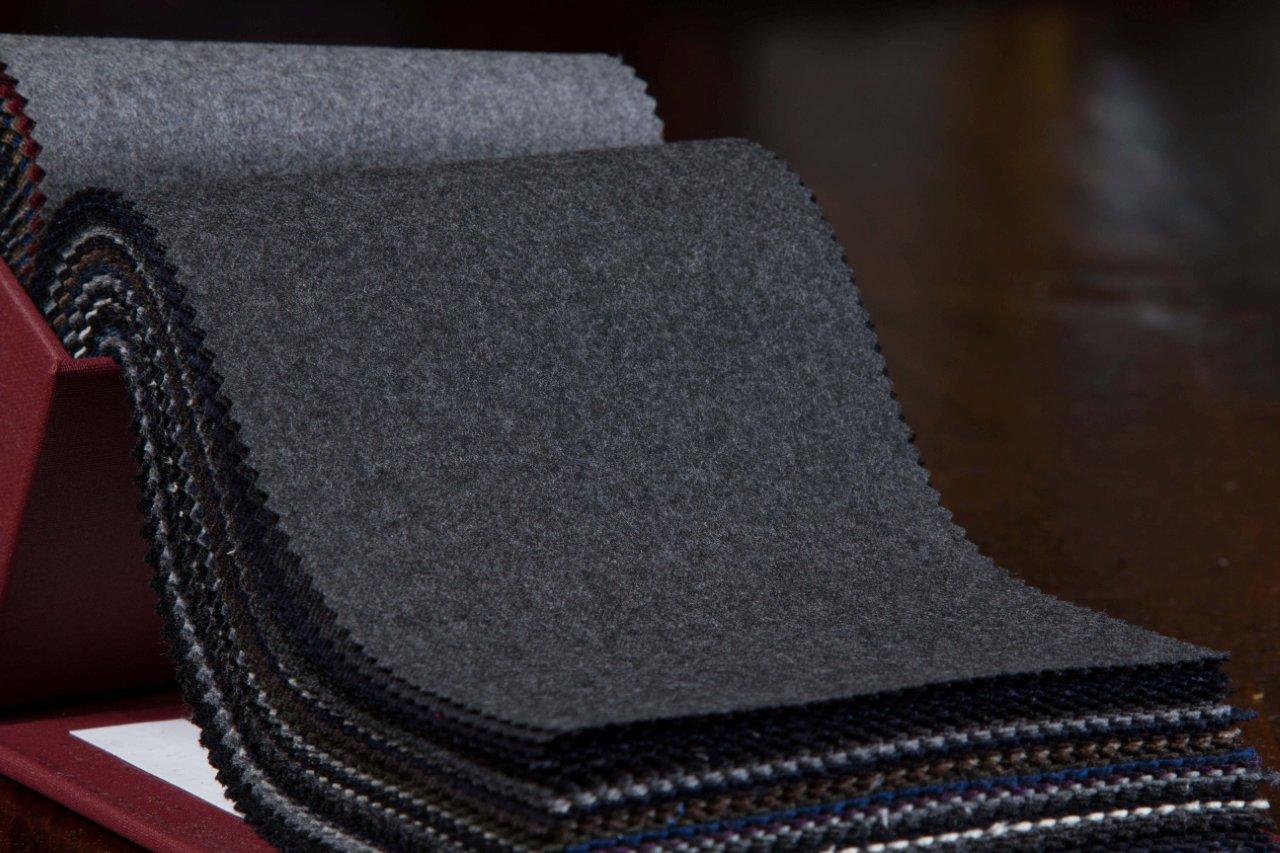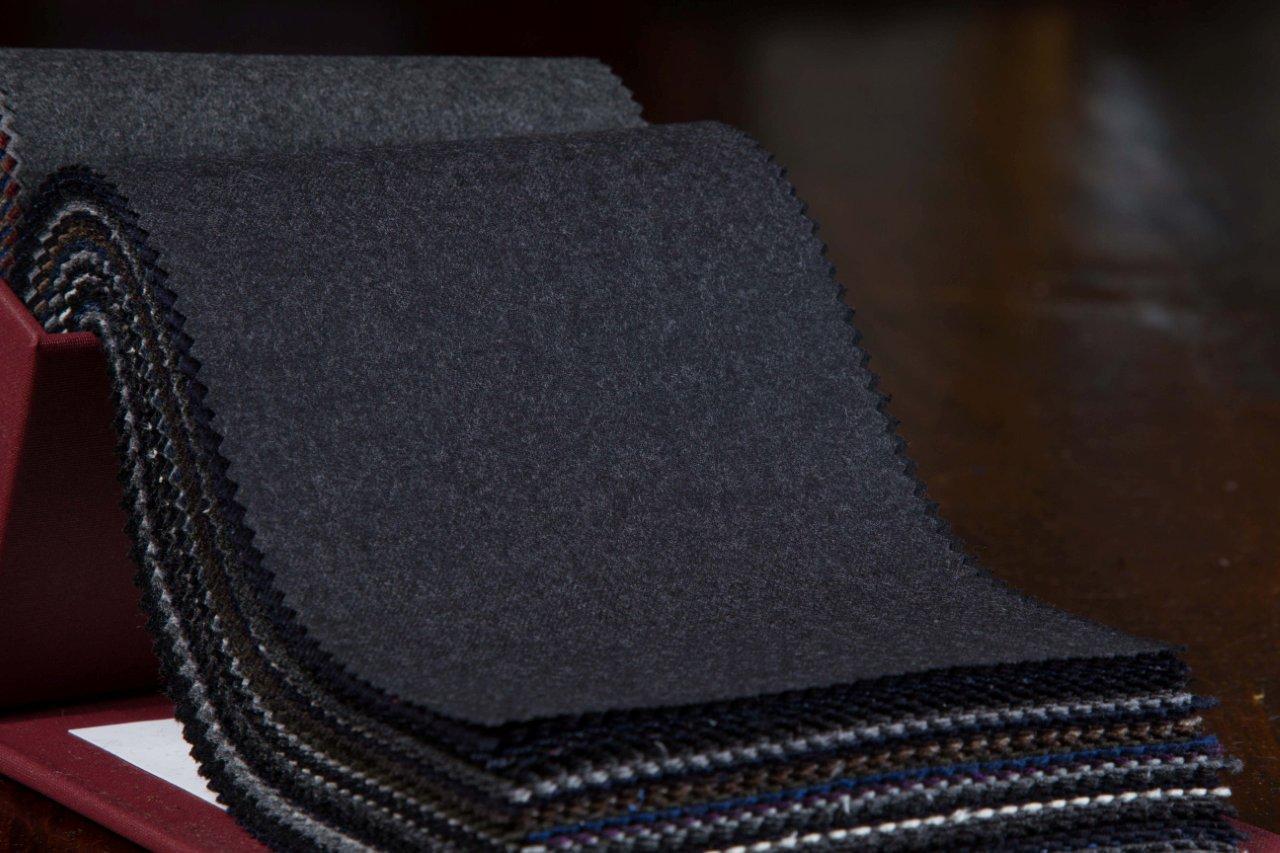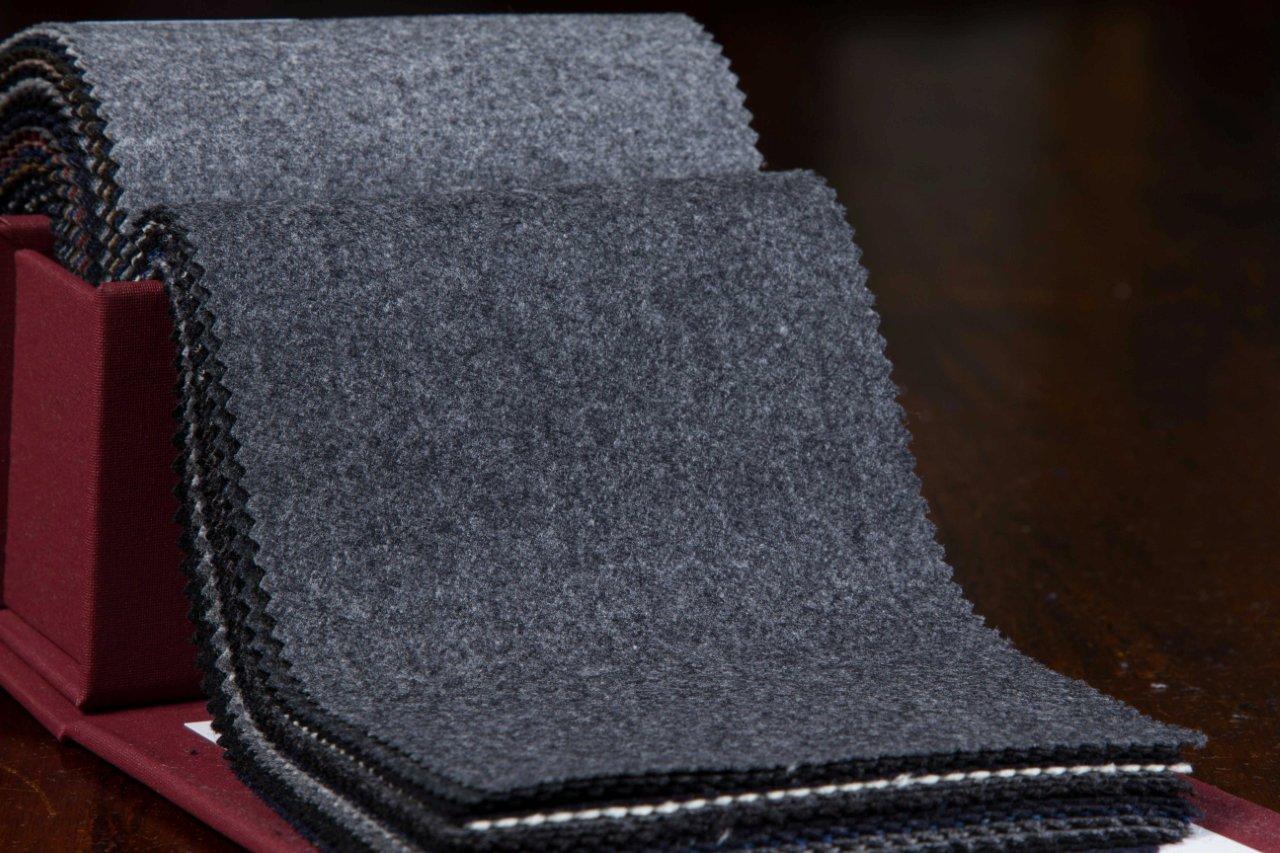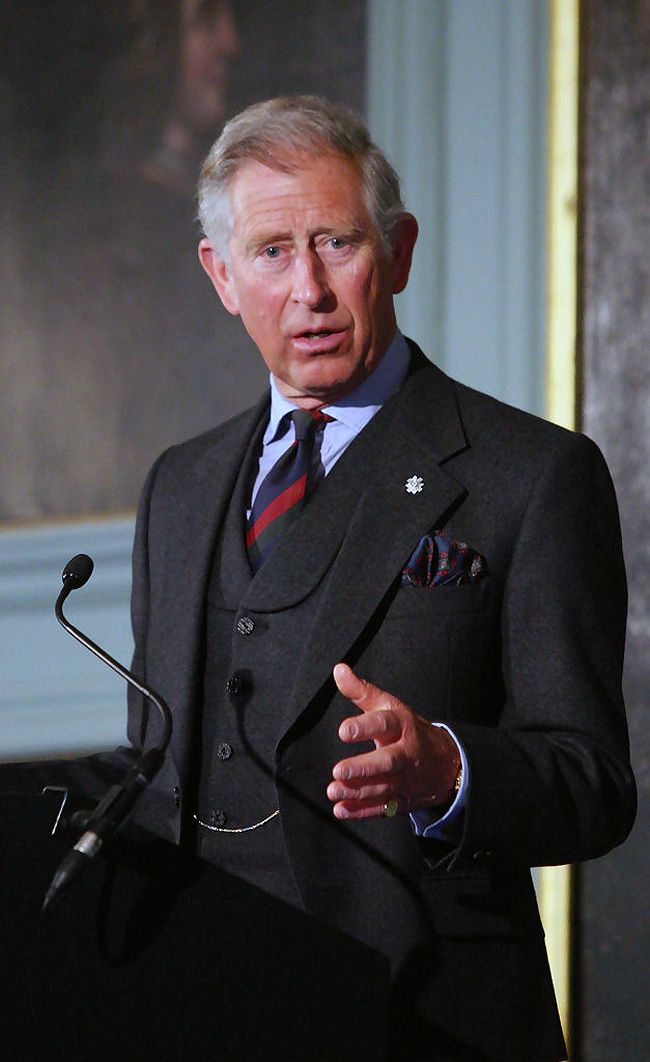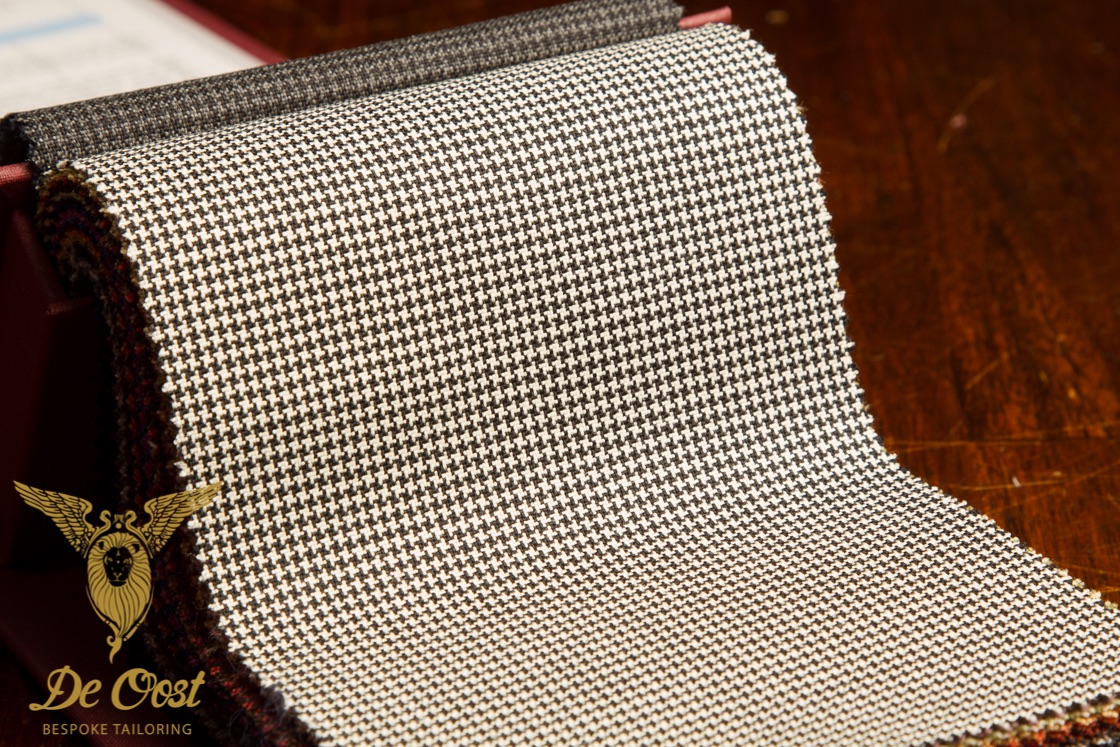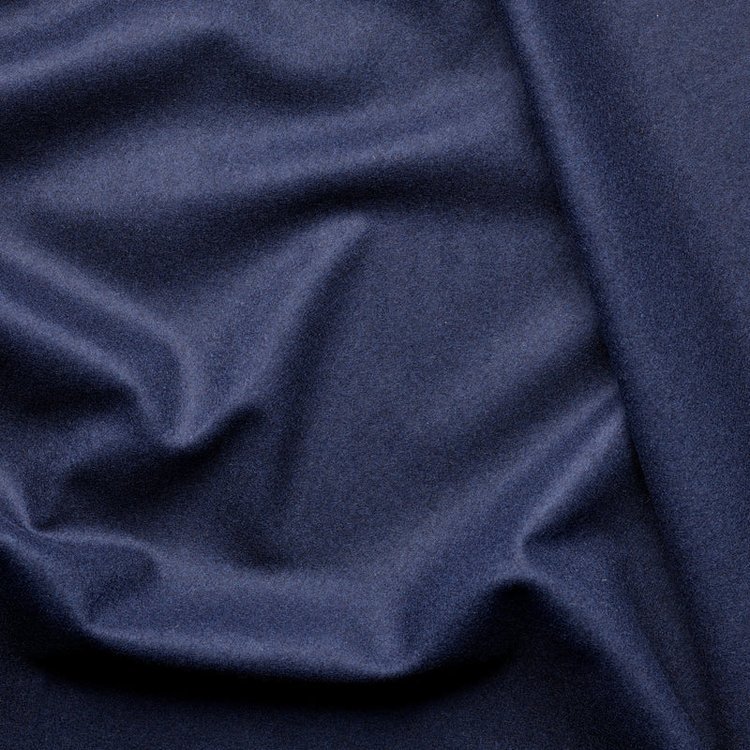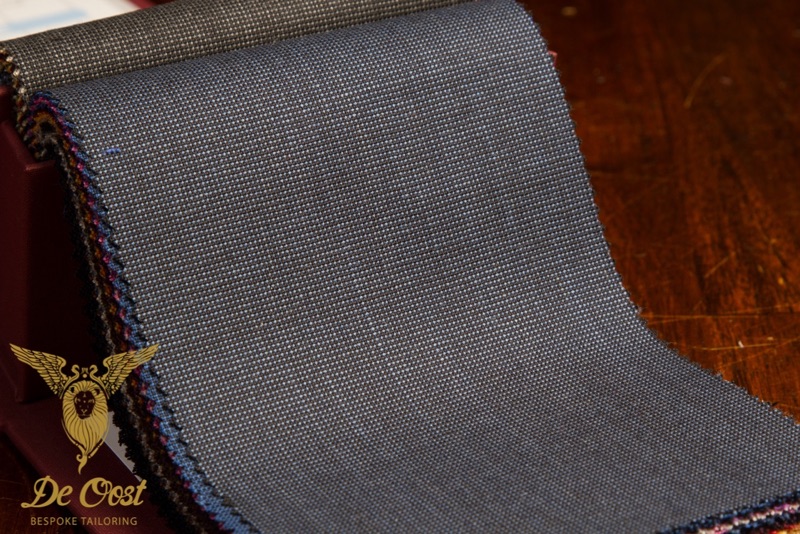Up to recently Flannel was referred to as old fashioned, something your grandfather would wear
At this moment we see a complete revival of this full bodied cloth. The classic grey and blues for the business occasions and classic jacket and the more dashing designs for waistcoats and suits for winter weddings
Though the shrinking demand for winter-weight wools has diminished the appeal of this icon of male refinement, the classic flannel suit remains a paragon of cool weather stylishness.
Ever since the famous 1950s novel The Man in the Gray Flannel Suit immortalized this cloth as a symbol of corporate rectitude, collegians, ad executives and Madison Avenue clothiers have regarded it as an important part of the wardrobe staple.
What is Flannel?
Don't be mistaken!
Flanel with one N is a type textile that is made loosely woven yarns, usually one or two sided hard wearing cotton. This is often used for pyjama's and shirts. Today we will discuss Flannel, with a double N. This is a famously supple, loosely woven suiting cloth which is brushed to create extra softness. In order to understand what kind of fabric flannel really is, let us first get back to the basics. Fabric is woven from yarns and there are two types of yarn. There are both carded (woollen) and worsted flannels made of fine Merino wool. The brushing process uses a fine metal brush, which rubs the fabric to create fine fibres from the loosely spun yarns.
Flannel suiting fabric samples available at De Oost, from the Holland & Sherry Classic Flannel Collection HS 1375.
Combed yarns
Combed yarns for menswear suitings are made of wool by rotating metal combs that align the long wool fibers while discarding the short staple ones. What’s left after this process, is a strong, smooth yarn with a somewhat glossy finish.
Carded yarns
On the other hand, carded yarns are brushed in a way that retains the long wool fibers as well as the short ones. As a consequence, the yarn is weaker than a combed one, hairy and matte.
Which one is better and for what occasion?
Genuine flannel is always made of carded yarns, but you can also find flannels made of combed yarns. In order to give a worsted cloth with combed yarns the hairy surface of a true carded flannel cloth, the surface must be roughed up in a special way.
Just as combed yarns are generally stronger and more resistant to rubbing, a carded flannel is weaker than a combed flannel. It is not advisable to wear carded flannel trousers for daily wear, because they will wear out faster in high friction areas. This type of Flannel should not be worn continuously over long periods, but allow time to rest. It also tends to peel under heavy friction. Therefore it is advisable to have two pairs of trousers for every matching jacket.
However, for general wear, carded flannel is perfect during the colder months of the year because it is heavy, cozy and soft. On the other hand, combed flannel is usually thinner and lighter than its carded sibling and also a bit glossier. As such, it is better suited to informal evening affairs and morning events. The cashmere stripe trousers for a stroller suit or morning coat are often made of this material or fine twill.
Traditionally, flannel was always made of wool, but today you can also find flannel made of cotton or artificial yarns. For jackets, suits and pants, 100% wool flannel is the best choice because it is comfortable, durable and drapes nicely. Flannel is soft rather than stiff. With just a pinch of texture, the best gray flannel eschews any hint of sharpness or newness, exuding that slightly worn-in, old-money associated with genteel taste. Owing to advanced textile technology. England’s and Italy’s top weavers now turn out lighter-weight worsted flannels with the authentic “English flannel” look. Still one should know that Flannel should not be worn continuously over long periods, but allow time to rest. It also tends to peel under heavy friction. Therefore it is advisable to have two pairs of trousers for every matching jacket.
How to recognize high quality flannel?
The vast majority of authentic flannel is woven as a twill, but that doesn’t mean that all flannel is created equal. The difference lies in the inputs and how they are manufactured. In the case of flannel, it depends on the quality of the wool used and the finishing applied to it.
A hallmark of quality flannels is the ‘melange’ color. This effect is achieved before the yarn is actually spun.
Normally, fabrics are yarn dyed, which gives the woven fabric a uniform color. With flannel, it is different: the unspun wool, the so-called woolen silver, is printed with the desired colors. The melange printing method is named after its French inventor Vigoureux. Once the woolen silver is printed, the wool is then spun into yarn with a mixed color. Once this yarn is woven, one receives the beautiful mottled melange color effect as seen above.
However, from a distance the fabric looks like a solid color. The Vigoureux printing process creates a certain color depth that you will not find in a plain solid fabric. Connoisseurs love this melange effect of their flannel, which gives it a slightly less formal and nonchalant touch.
History of Flannel
The word Flannel is thought to have a Welsh origin. The French term ‘flanelle’ began to be used in the late 17th century, and the German ‘flanell’ was first seen in the early 18th century. In the 19th century, flannel was made in the Welsh towns of Newtown, Montgomeryshire, Hay on Wye and Llanidloes. The expansion of its production is closely associated with the spread of carding mills, which prepared the wool for spinning. At one point, Welsh, Yorkshire, Lancashire and Irish flannels differed slightly in character due largely to the grade of raw wool used in each area: some being softer and finer than others. Originally developed as a military cloth to avoid snagging, flannel developed into a luxury fabric as milling became more refined over the last one hundred years. Nowadays, the colour of flannel is produced by dyes – originally this was achieved through mixing different coloured wools in varying quantities.
The Effect of a Grey Flannel Suit
Flannel is a wonderful fabric and if you live in colder parts of the world, there are at least two dozens ways of making flannels into great garments. However, the most well-known flannel garment is undoubtedly the gray flannel suit. Although it was well-known in the 1930’s, the 1956 movie The Man in the Gray Flannel Suit helped to make it a wardrobe staple across the U.S. and the world. There are many style icons that can inspire us how to wear a gray flannel suit.
Gianni Agnelli, Ambassador of Flannel
Gianni Agnelli was so enamored with flannel that he can be considered one of the best-known ambassadors of the fabric. He owned many flannel suits in various shades of gray and loved flannel neckties. However, he was particularly fond of one mid-dark gray shade of flannel, which became the Agnelli flannel. It was originally woven by Vitale Barberis Canonico and due to its popularity, they still make it today. He had learned all the rules for classic men’s style and then broke them in many ways, thus creating his unique hallmark style.
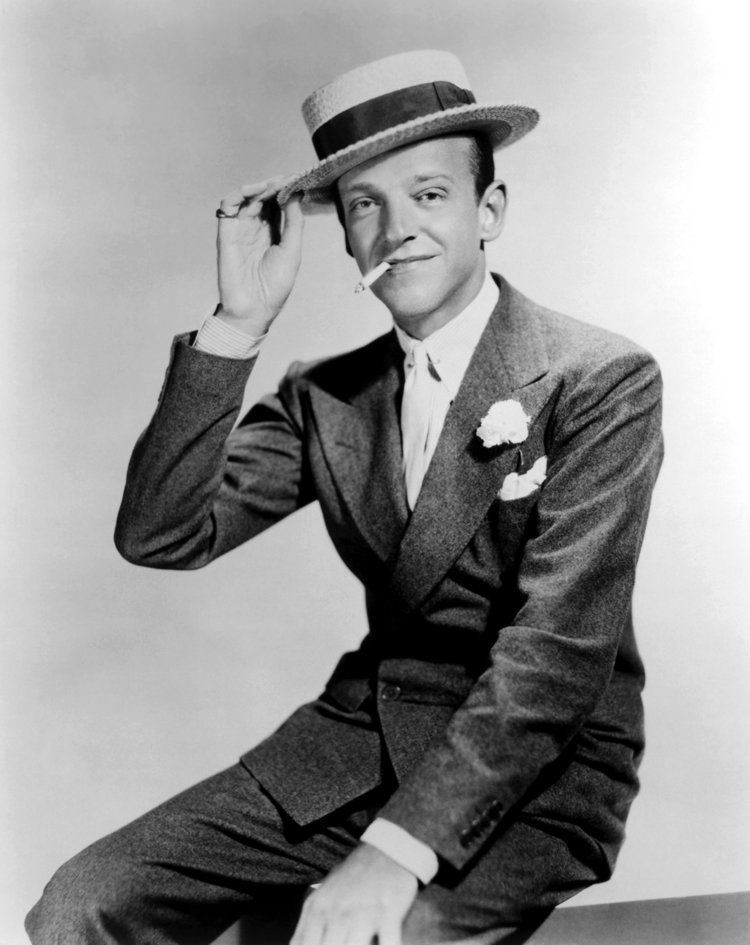
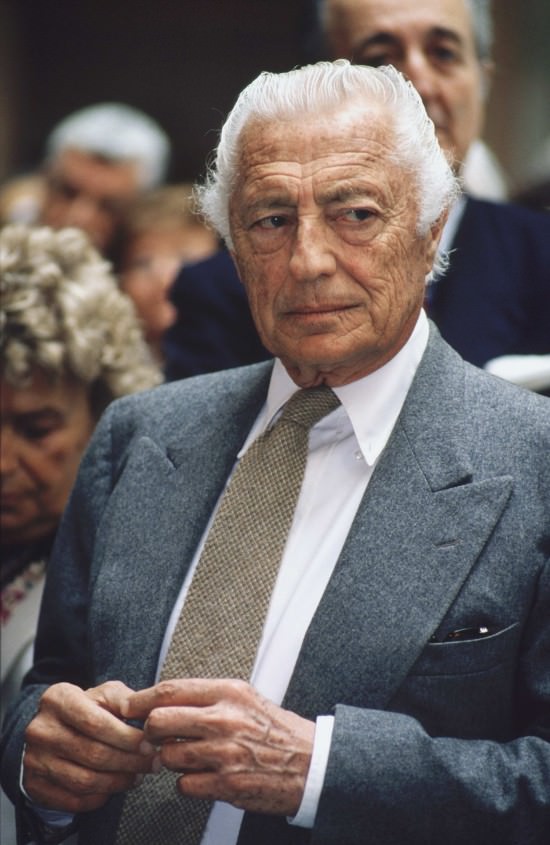
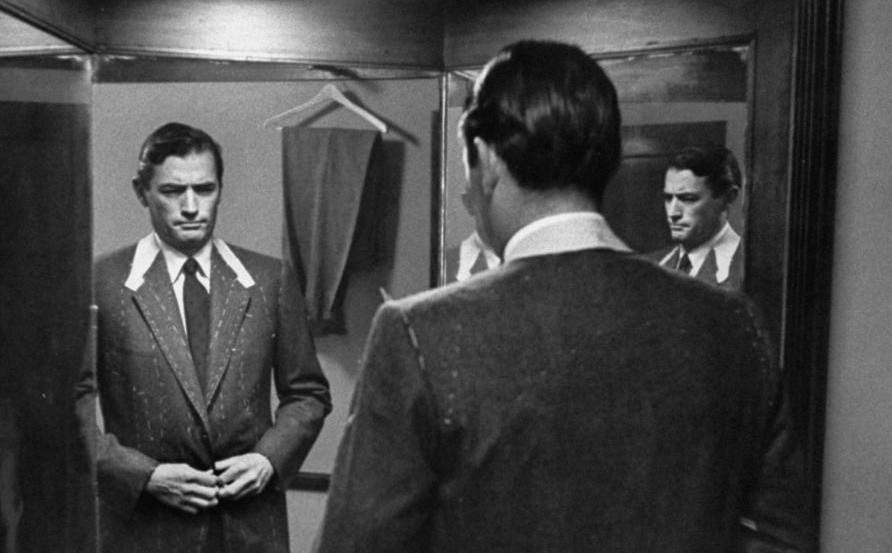

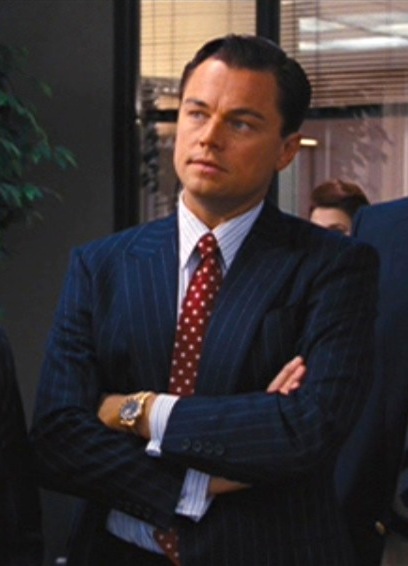
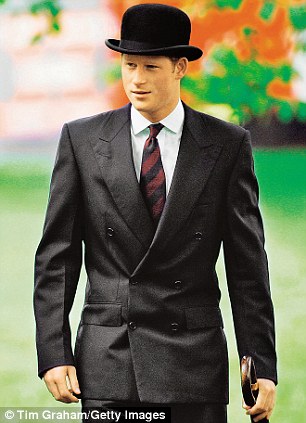
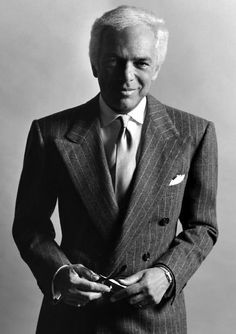
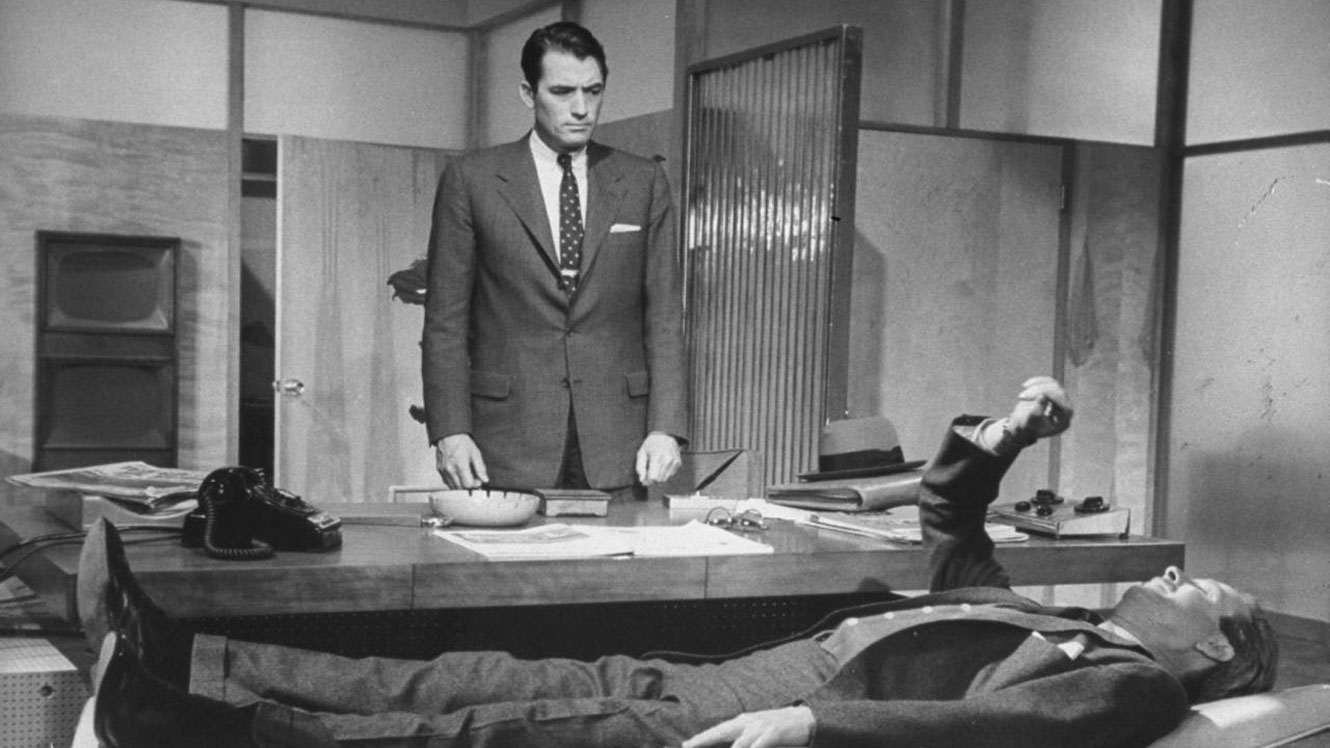
Like the charcoal worsted, the medium gray flannel is the perfect foil for accessories of all backgrounds. Whether a soft-spoken button-down or a starchy spread-collar, dress shirts and neckwear of every description are welcomed by gray flannel’s sumptuous repose. Imbuing its wearer with a relaxed elegance, the well-cut gray flannel grows more flattering with wear. For regular office wear, a dark gray or charcoal flannel suit is probably the best bet.
Technically, a gray flannel suit can be single breasted with notched lapels, peaked lapels, two buttons, three buttons or any number of combinations. Apart from solid gray flannel suits, it looks particularly handsome as a chalk-stripe suit or windowpane suit.
Men who have developed their own sense of style often wear lighter gray flannel suits and while that may look dashing, it is definitely a more advanced look.Of course, you can also combine your gray flannel trousers with a blazer or a checked sportcoat, making it a very versatile suit that should be part of every well-dressed man’s wardrobe.
Other Articles about Flannel we advice:
Parisian Gentleman
Sartorial Notes

